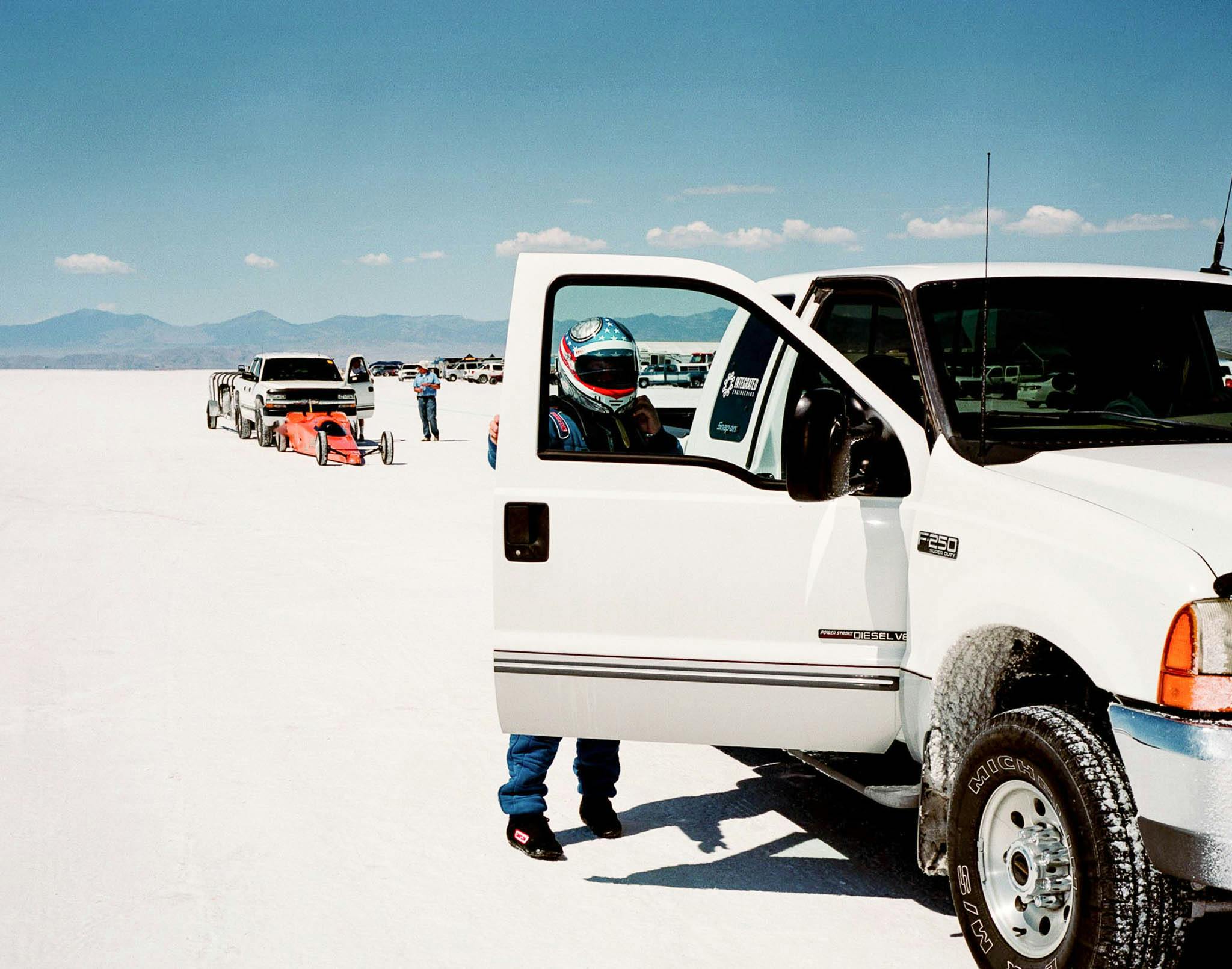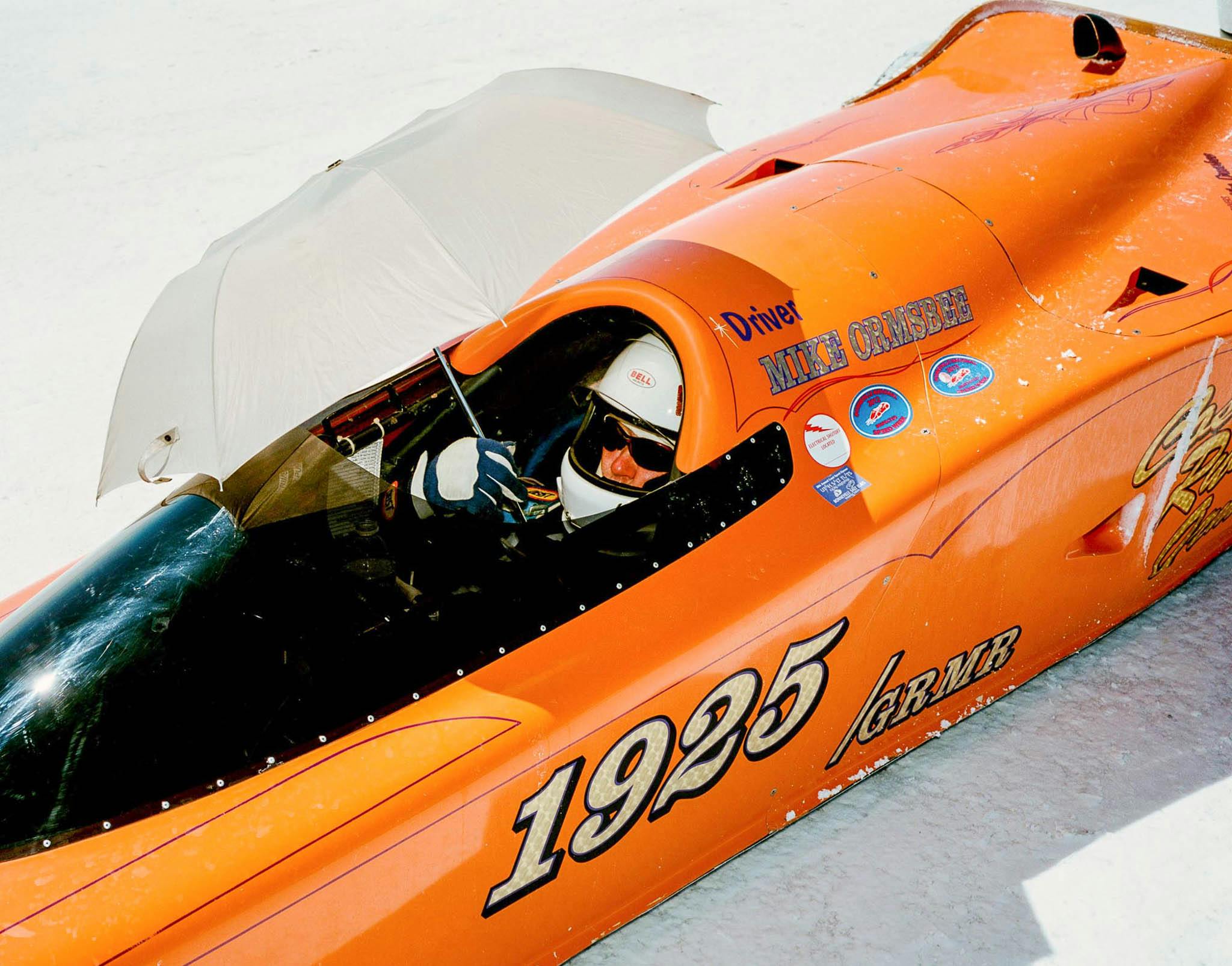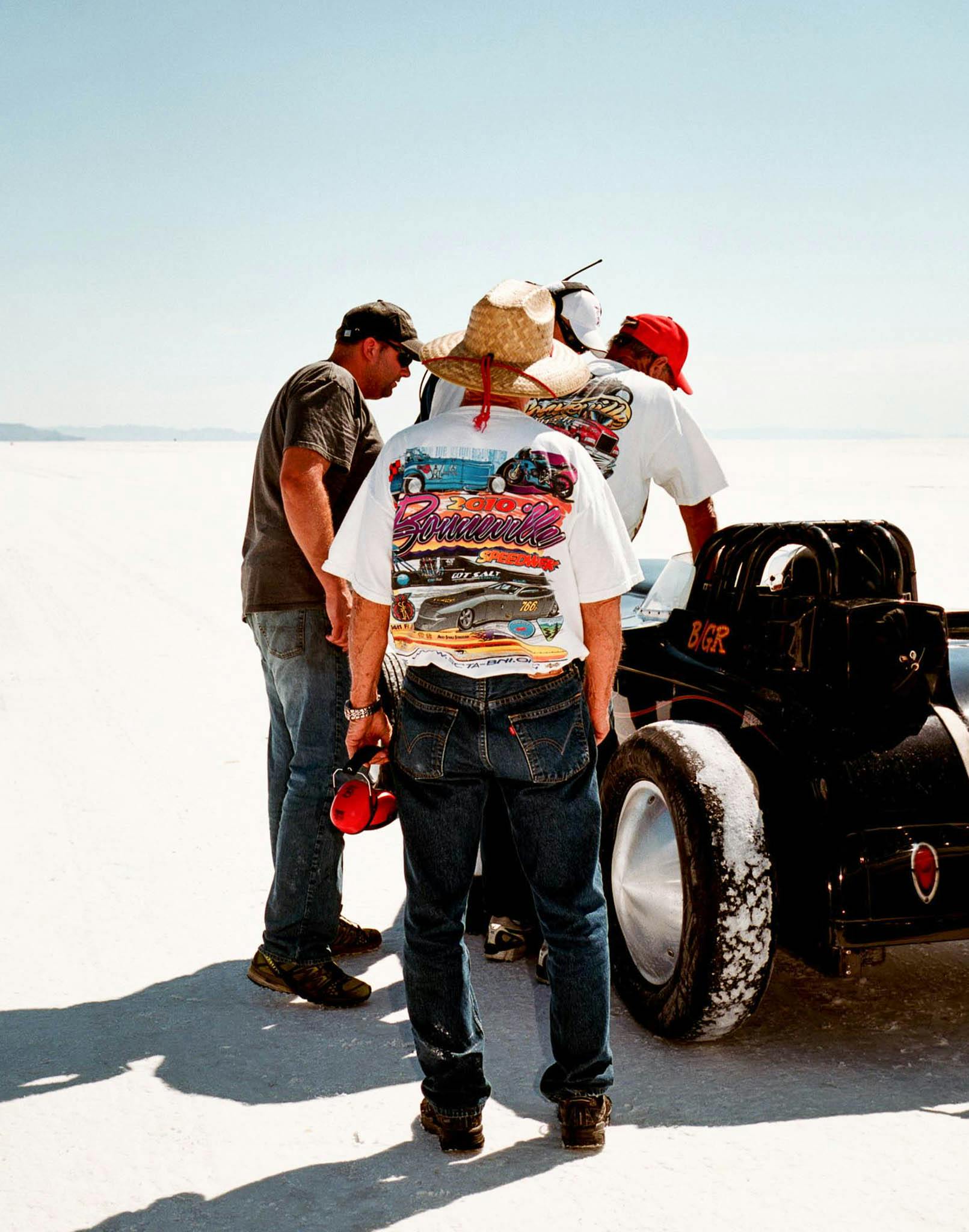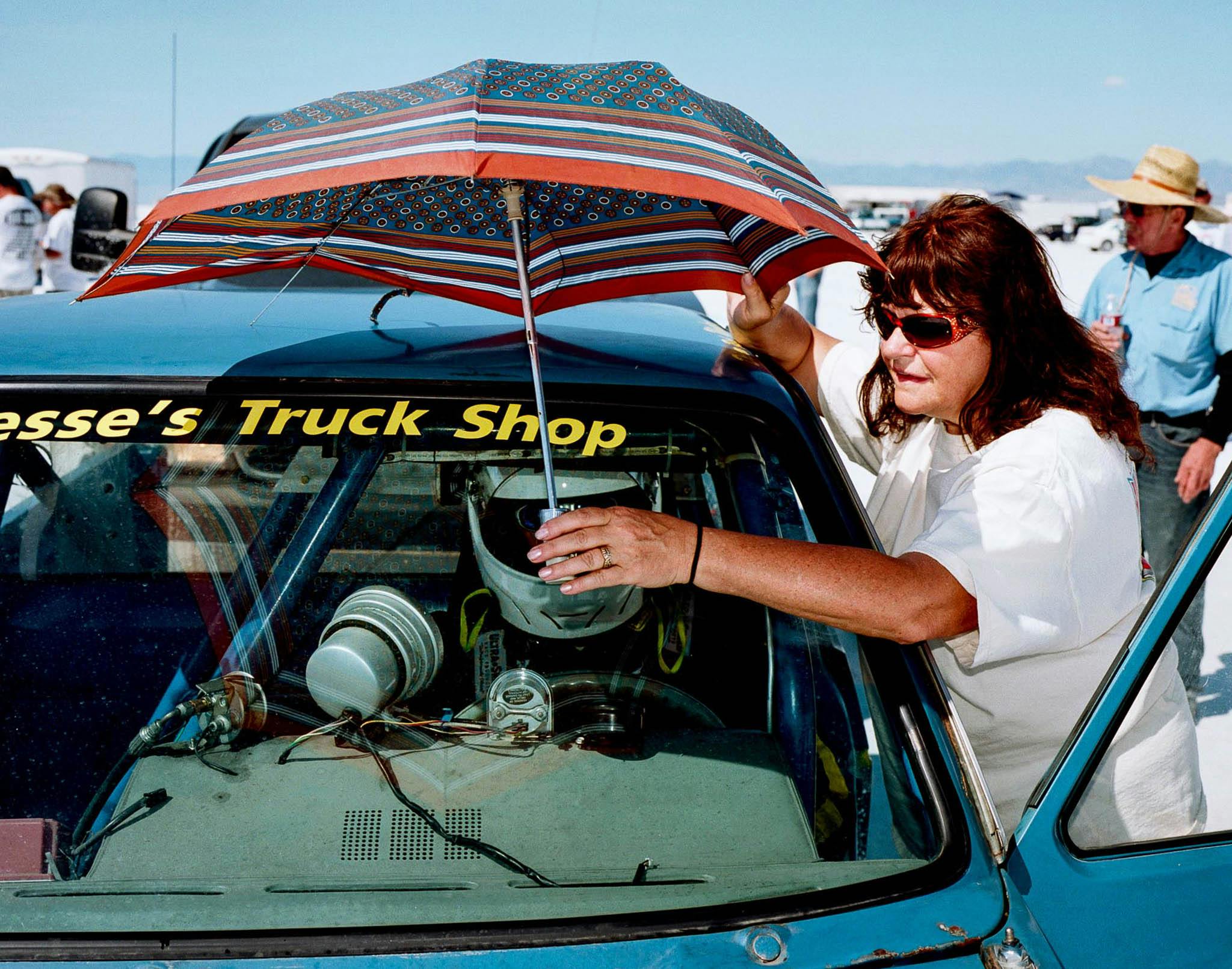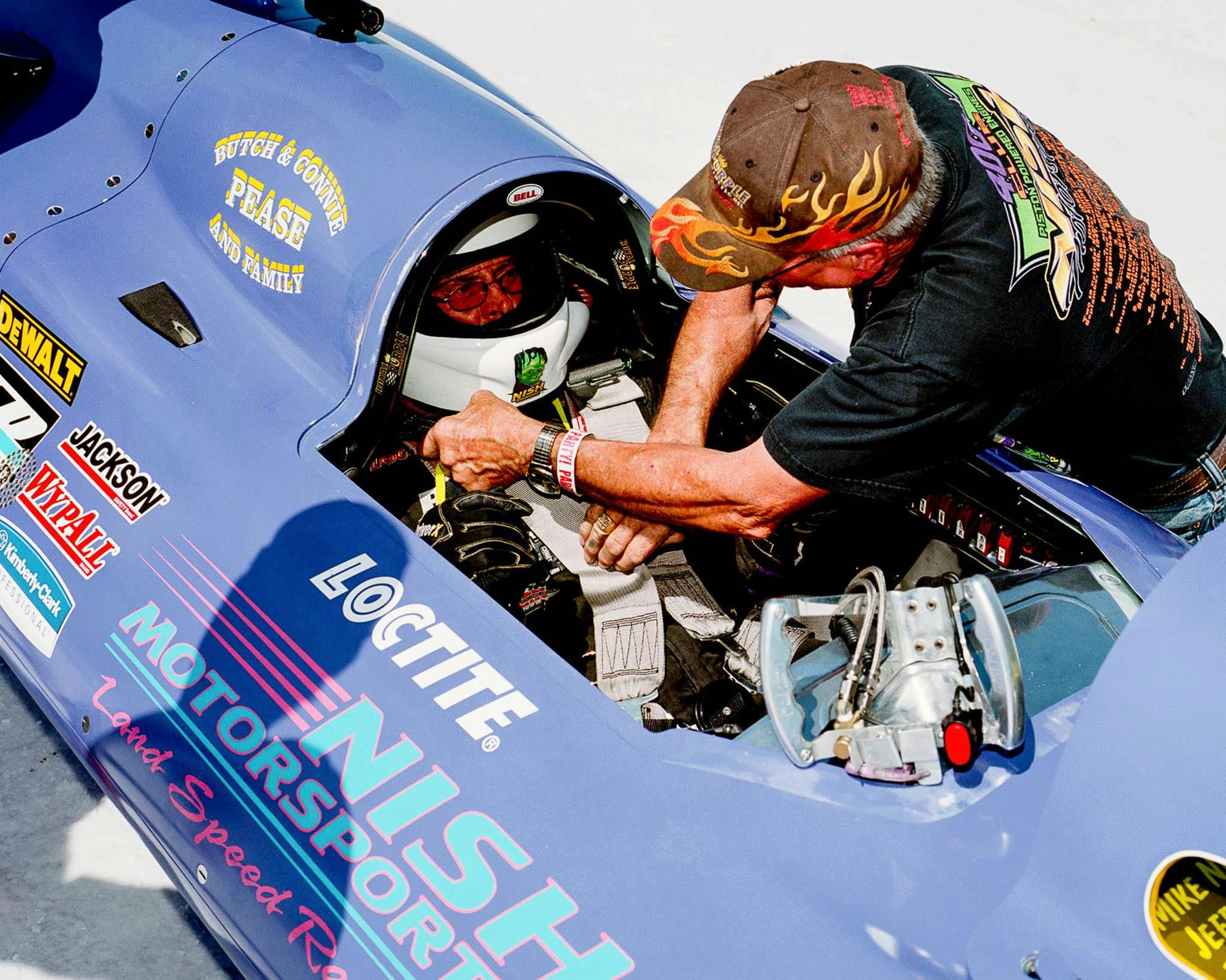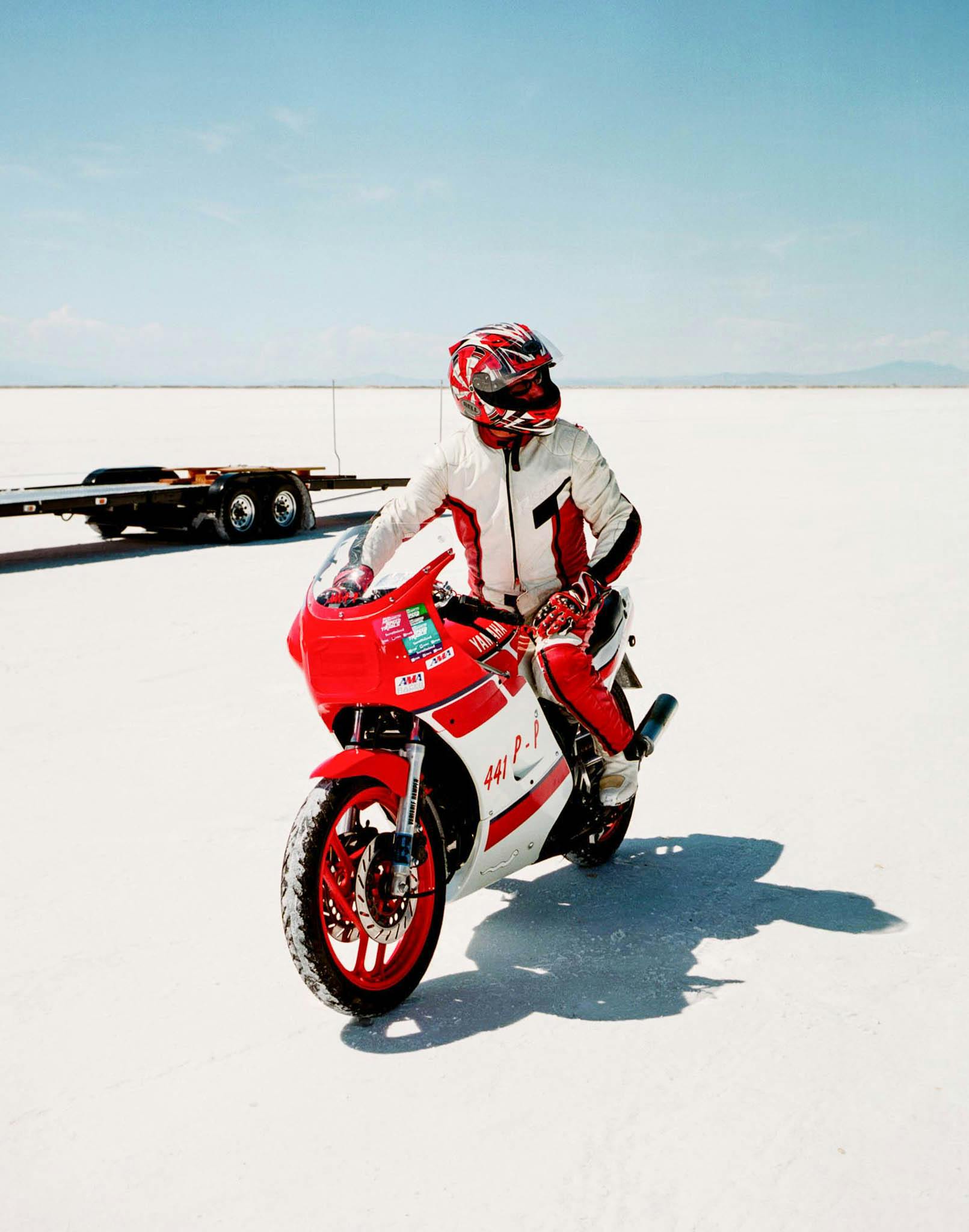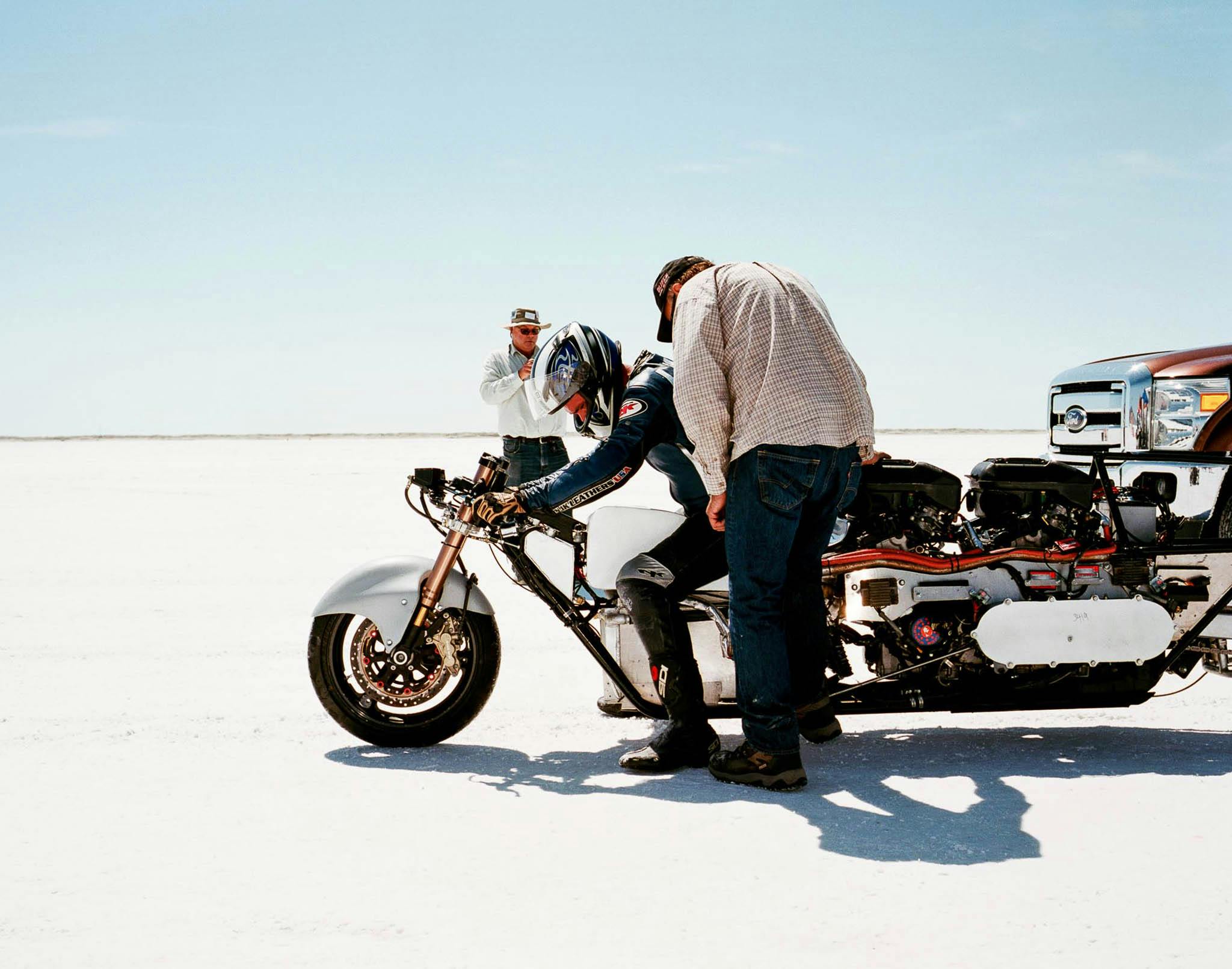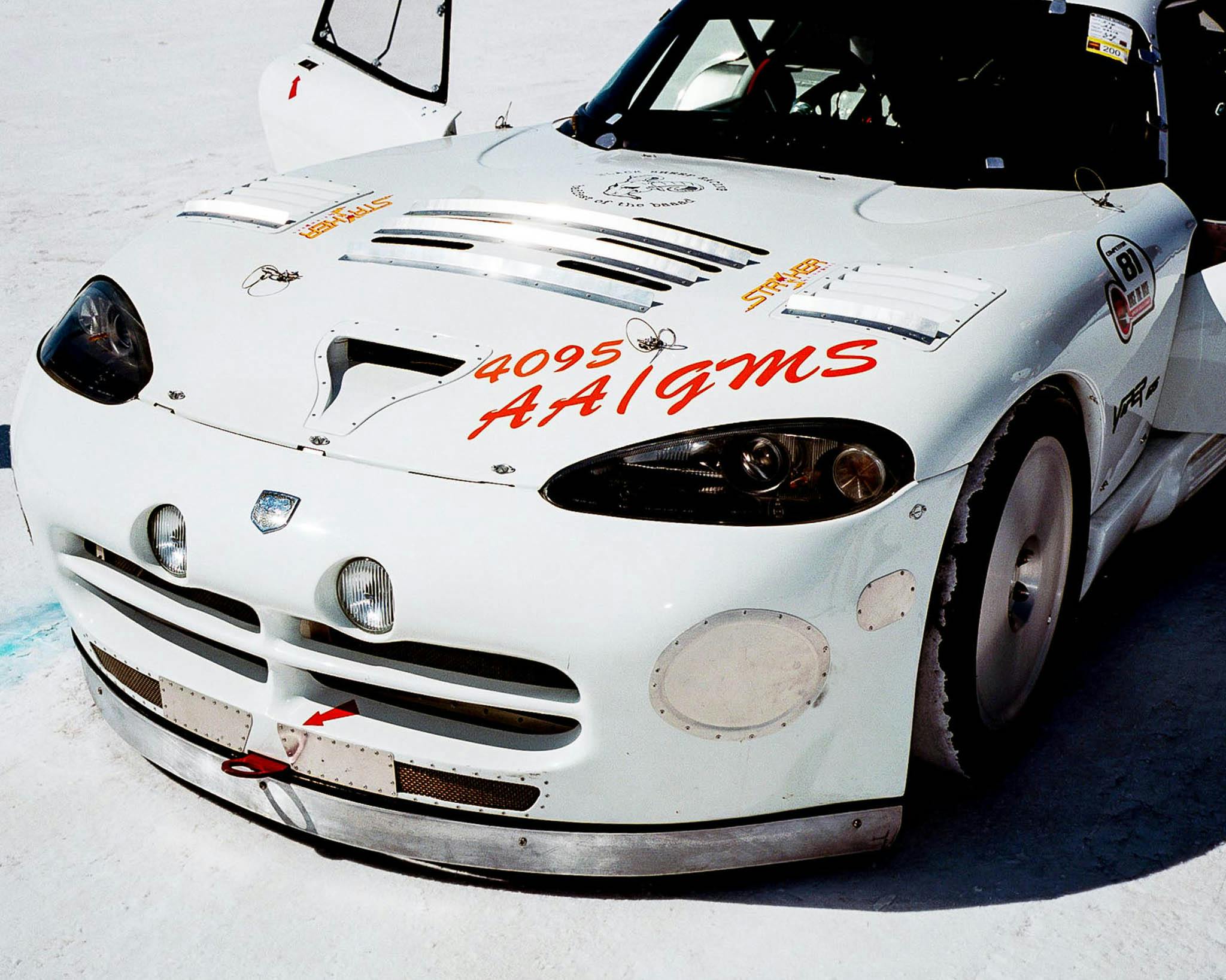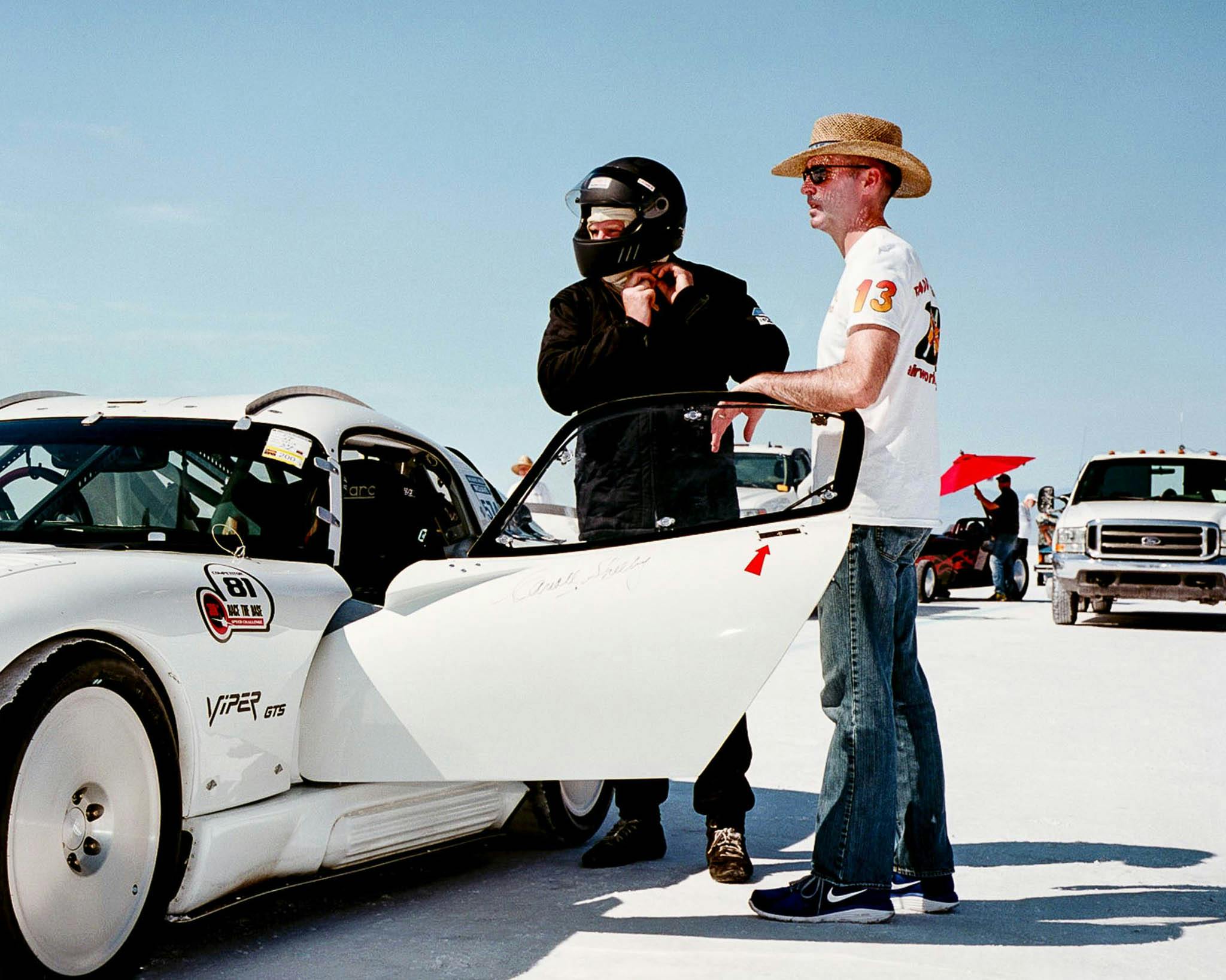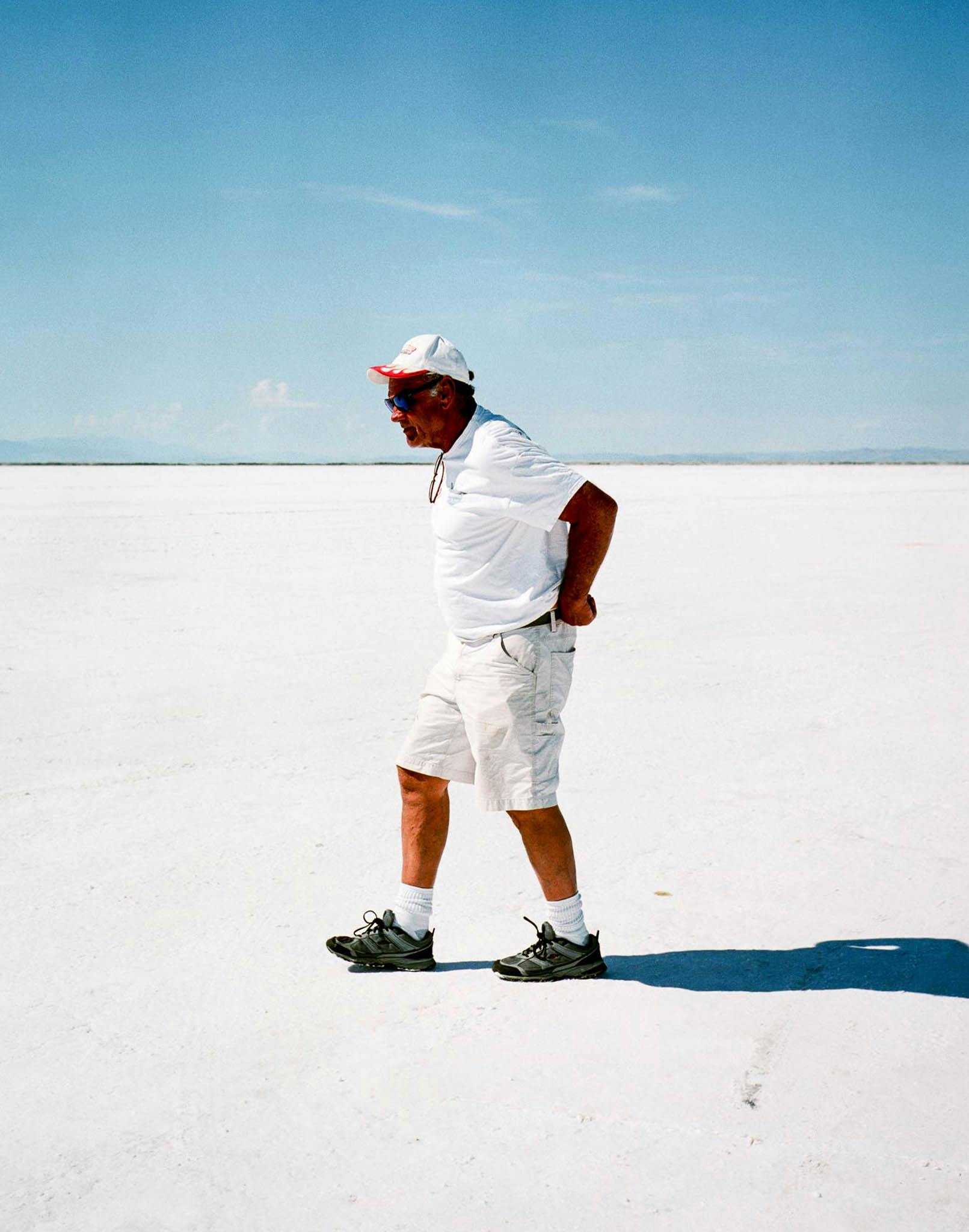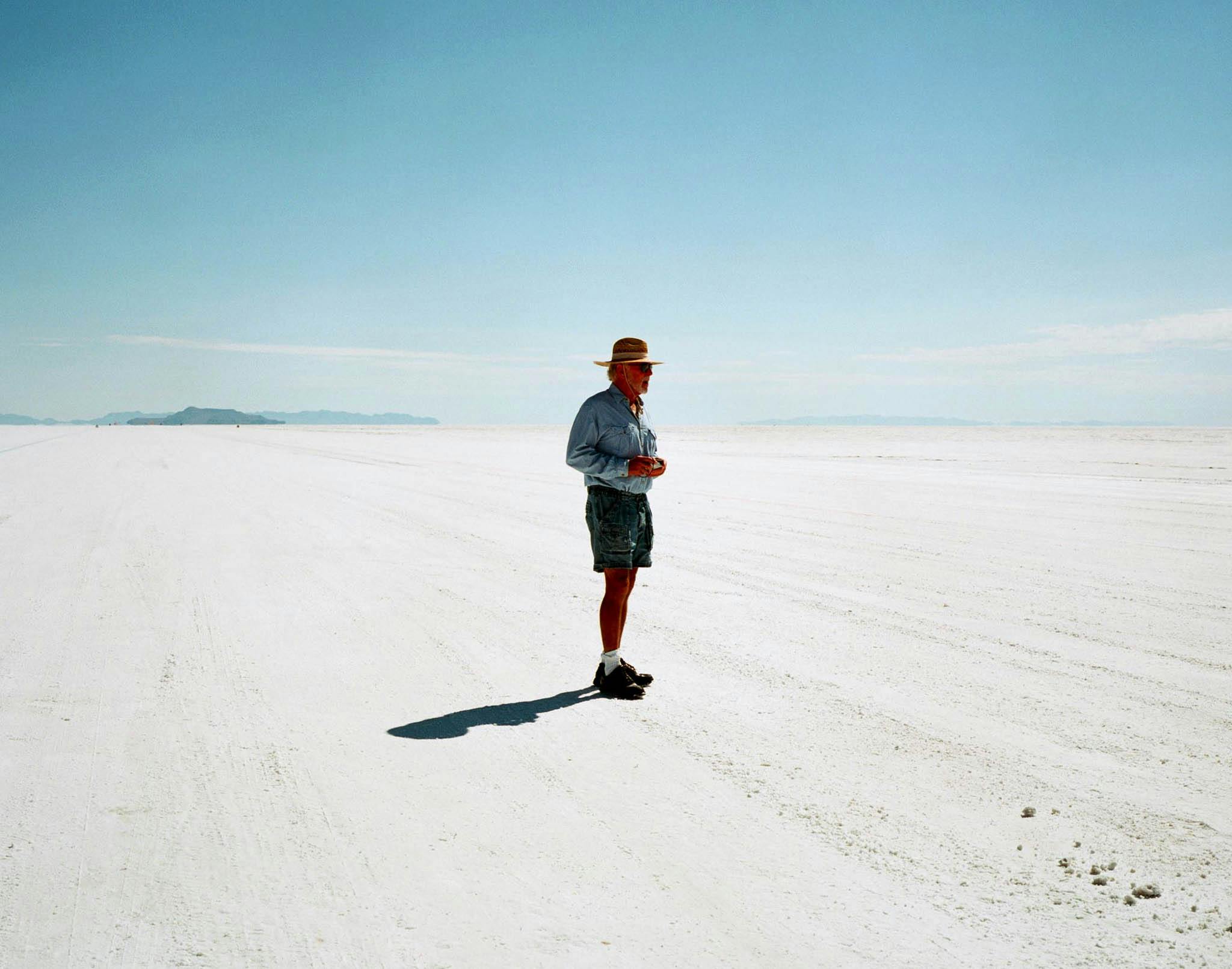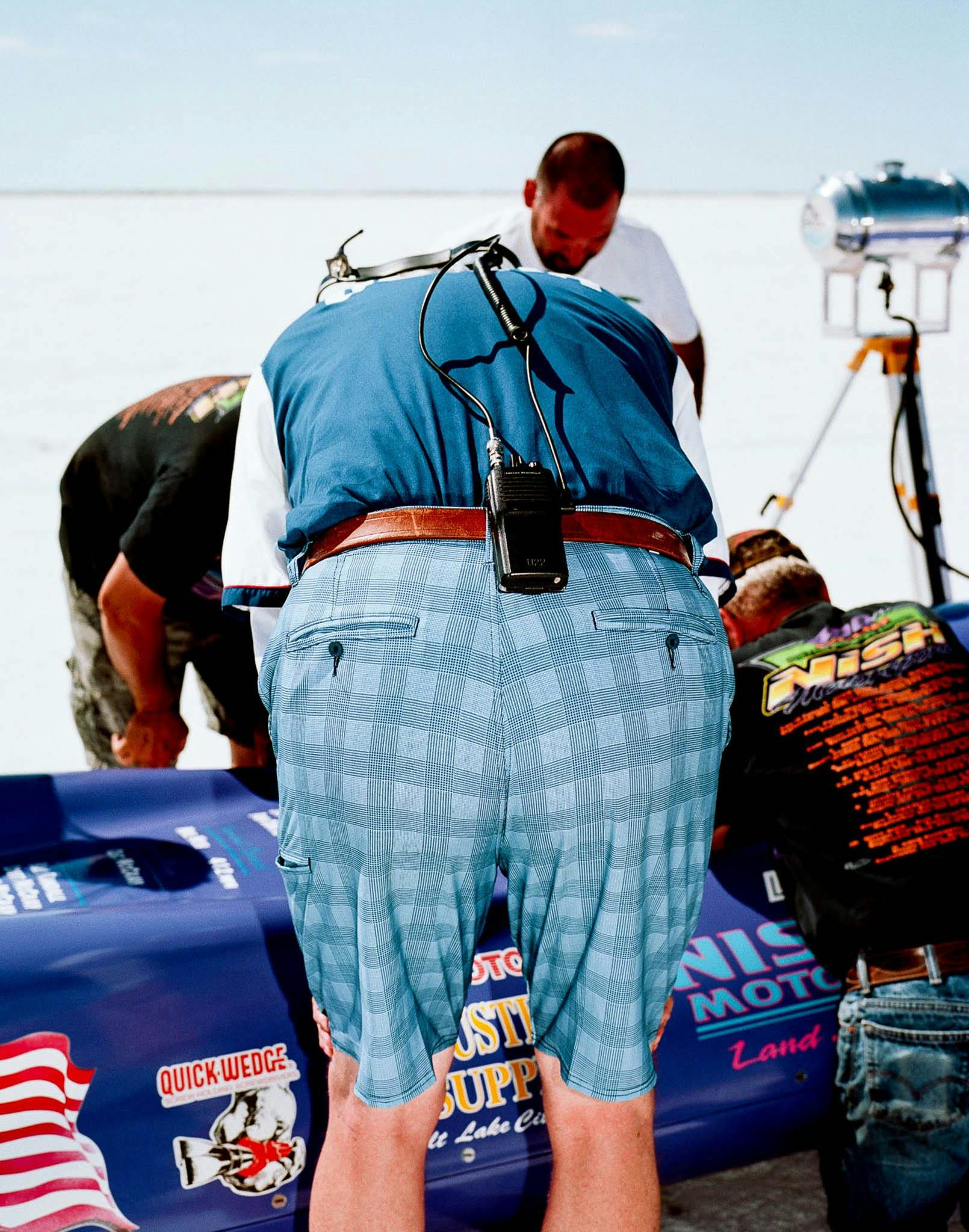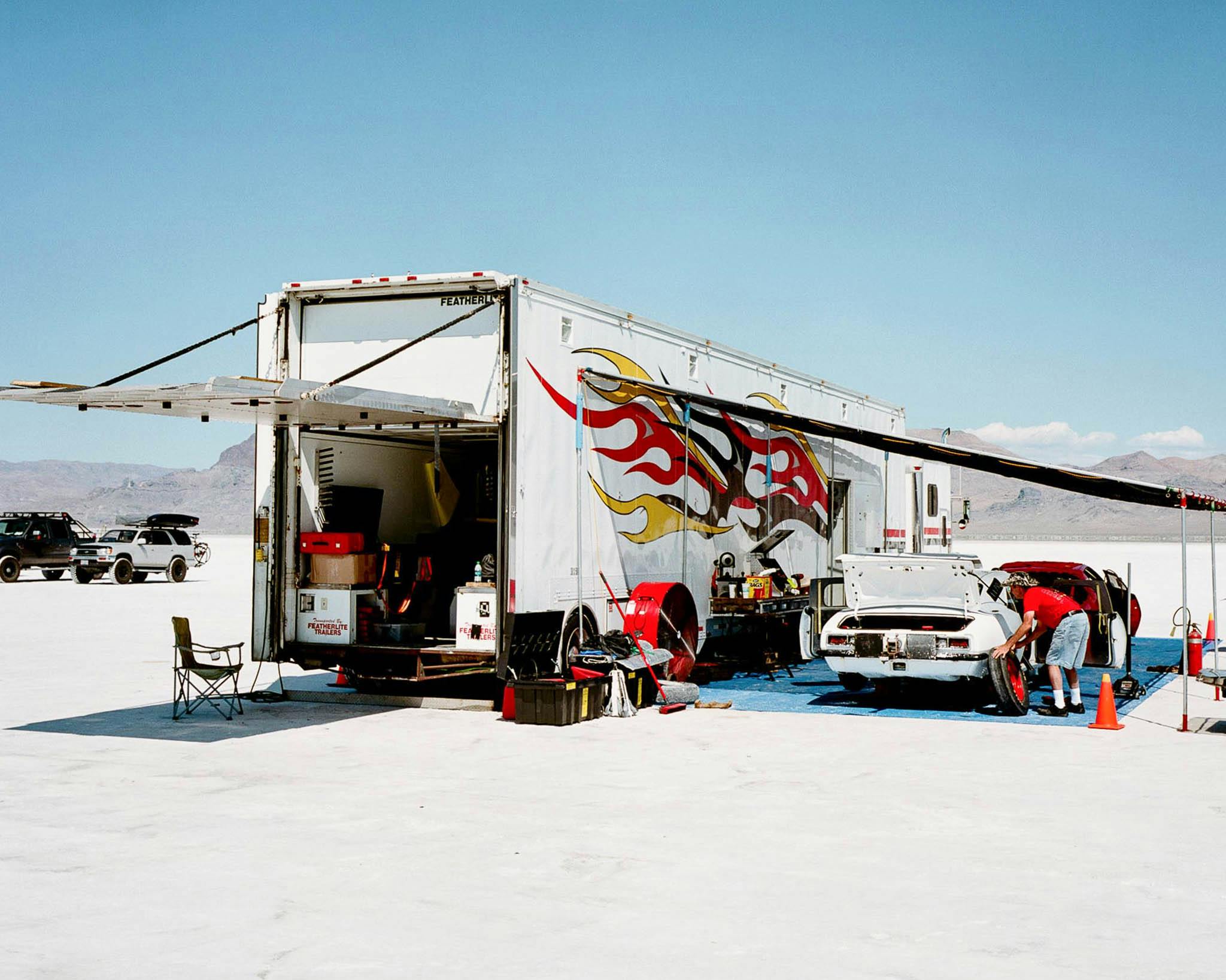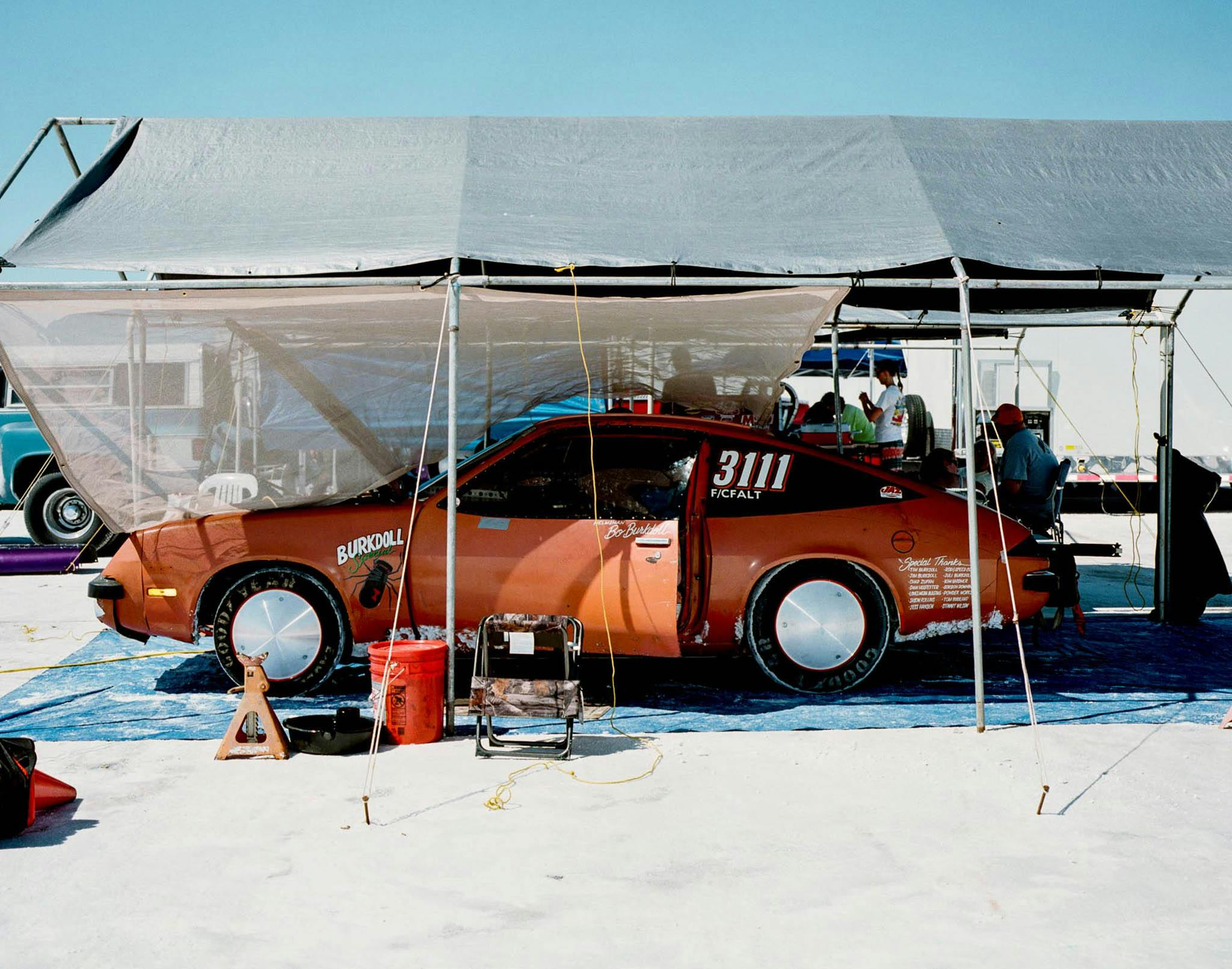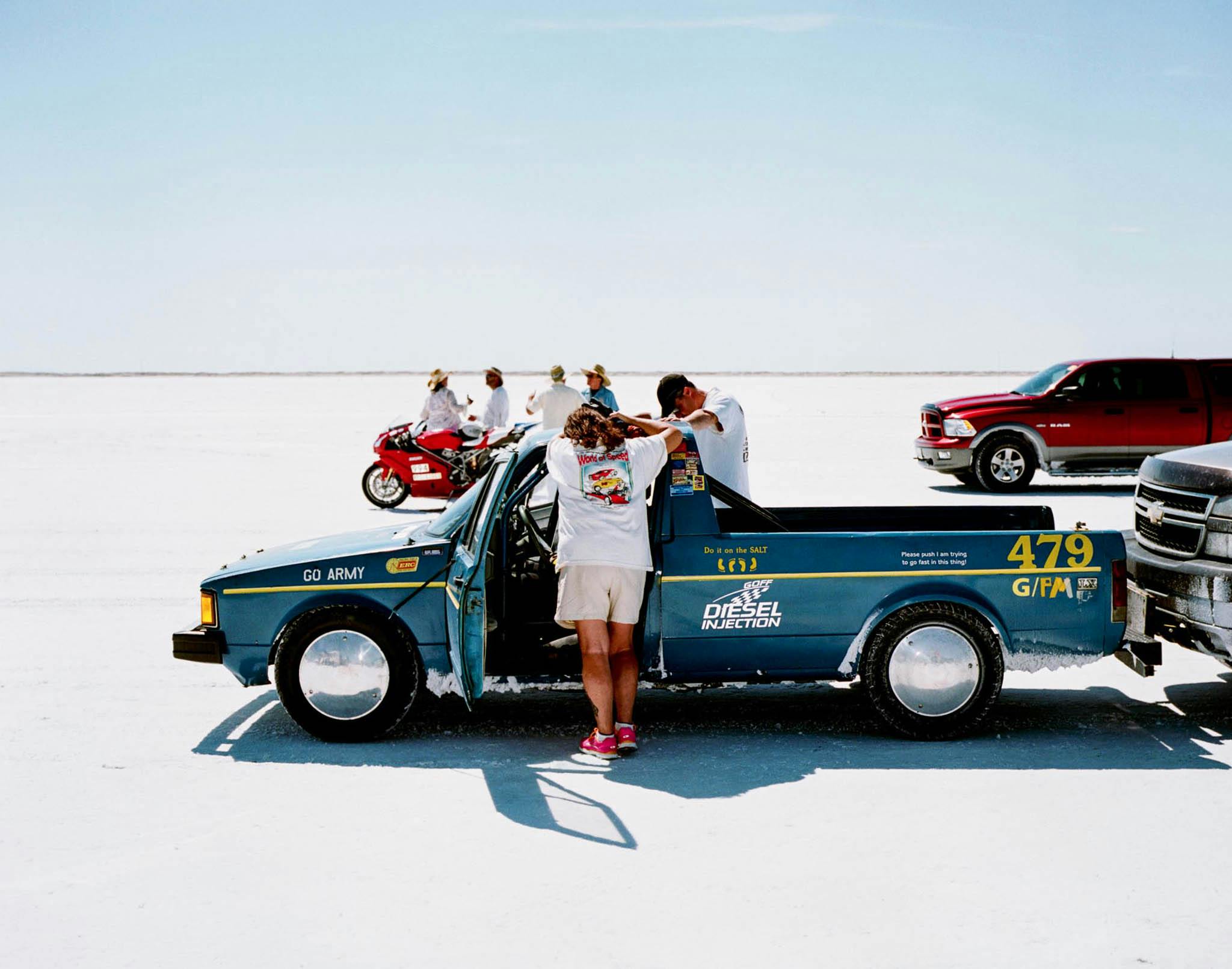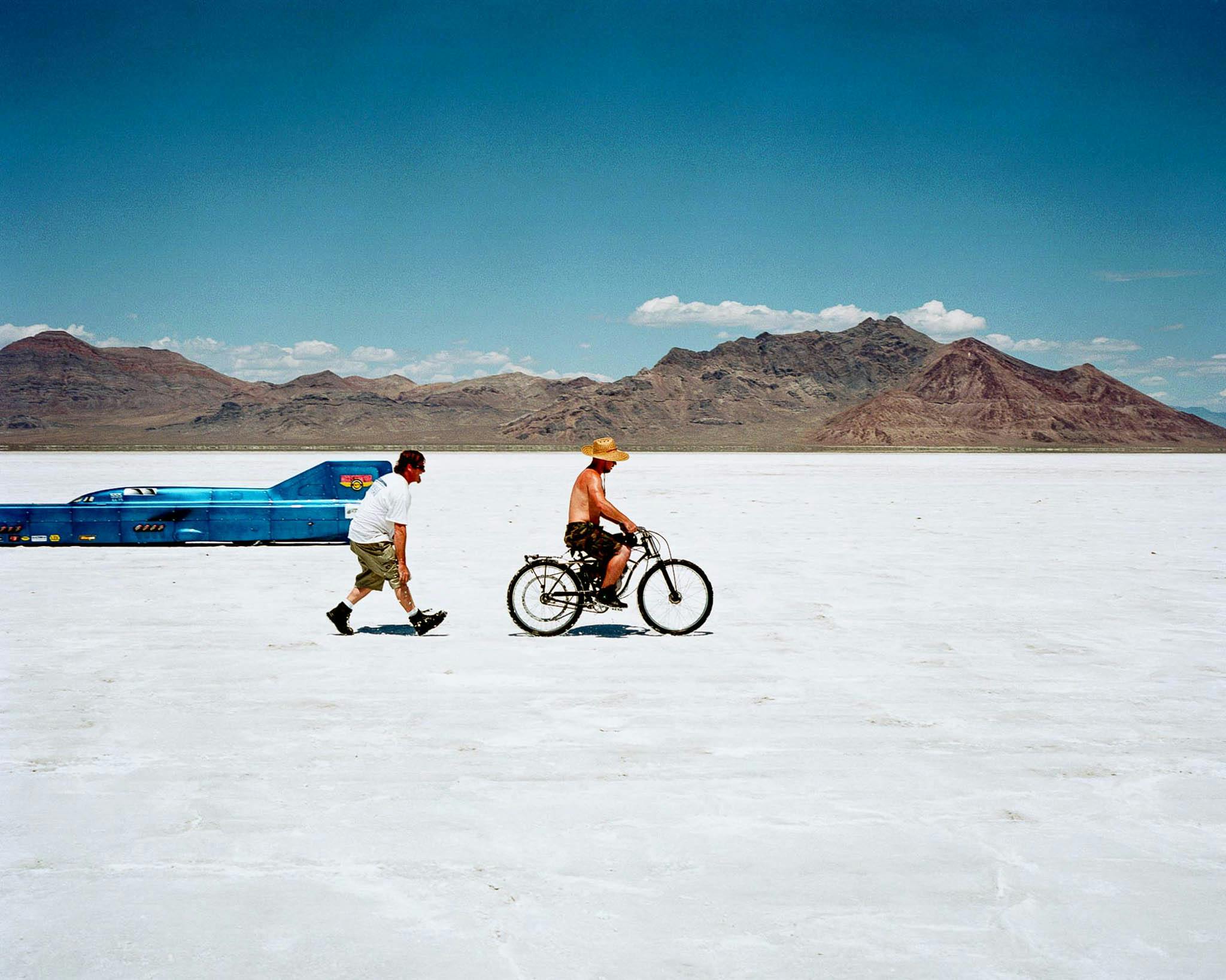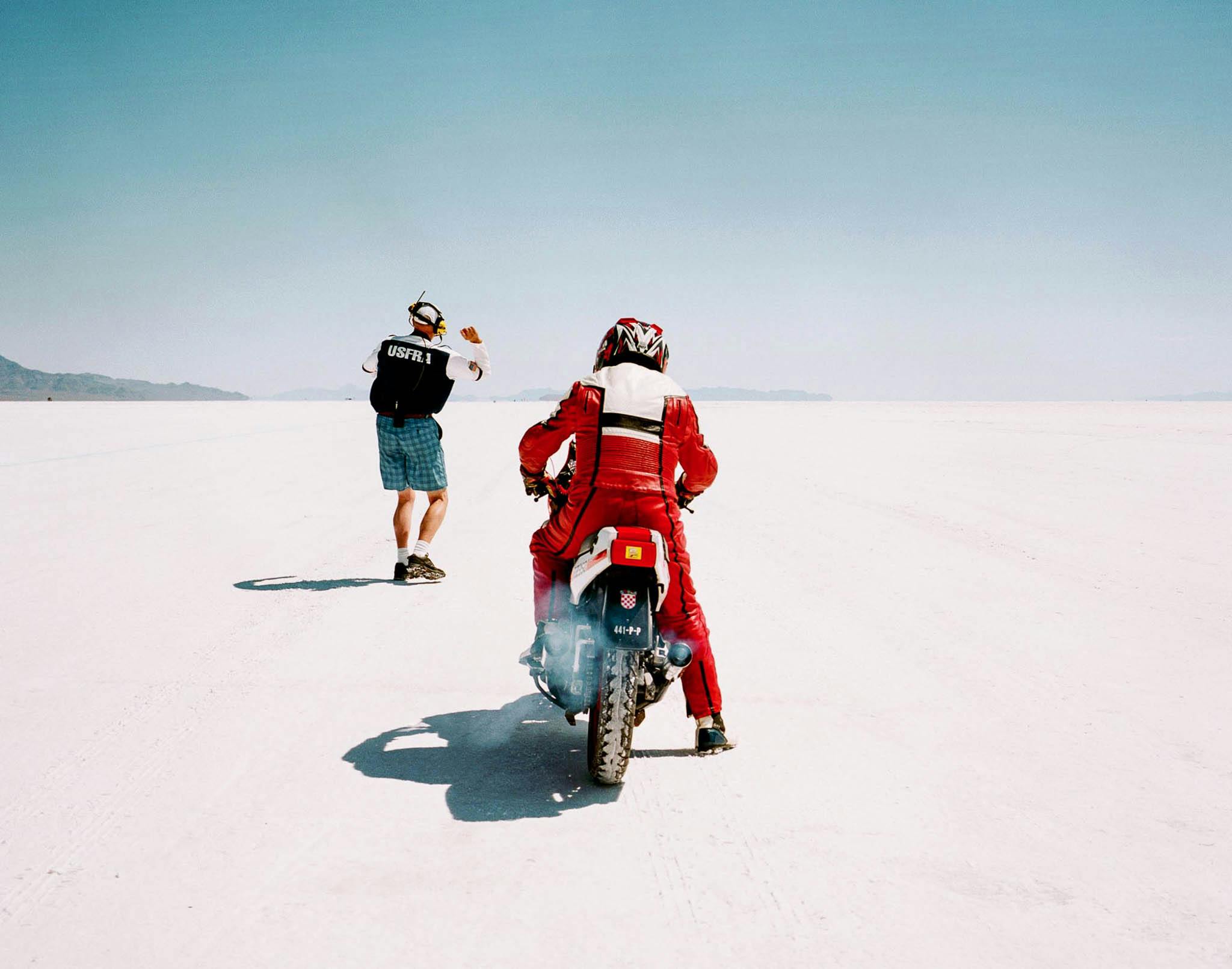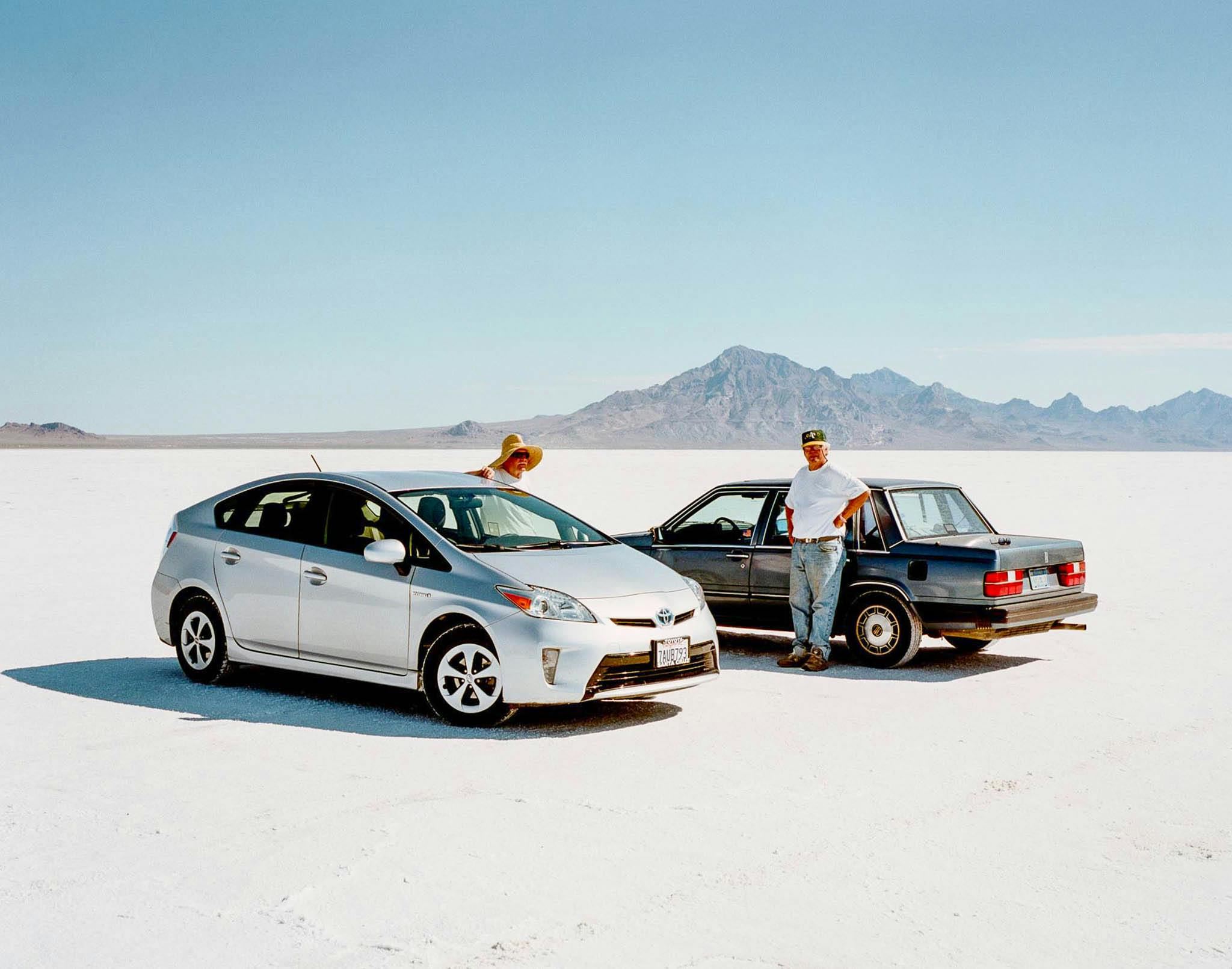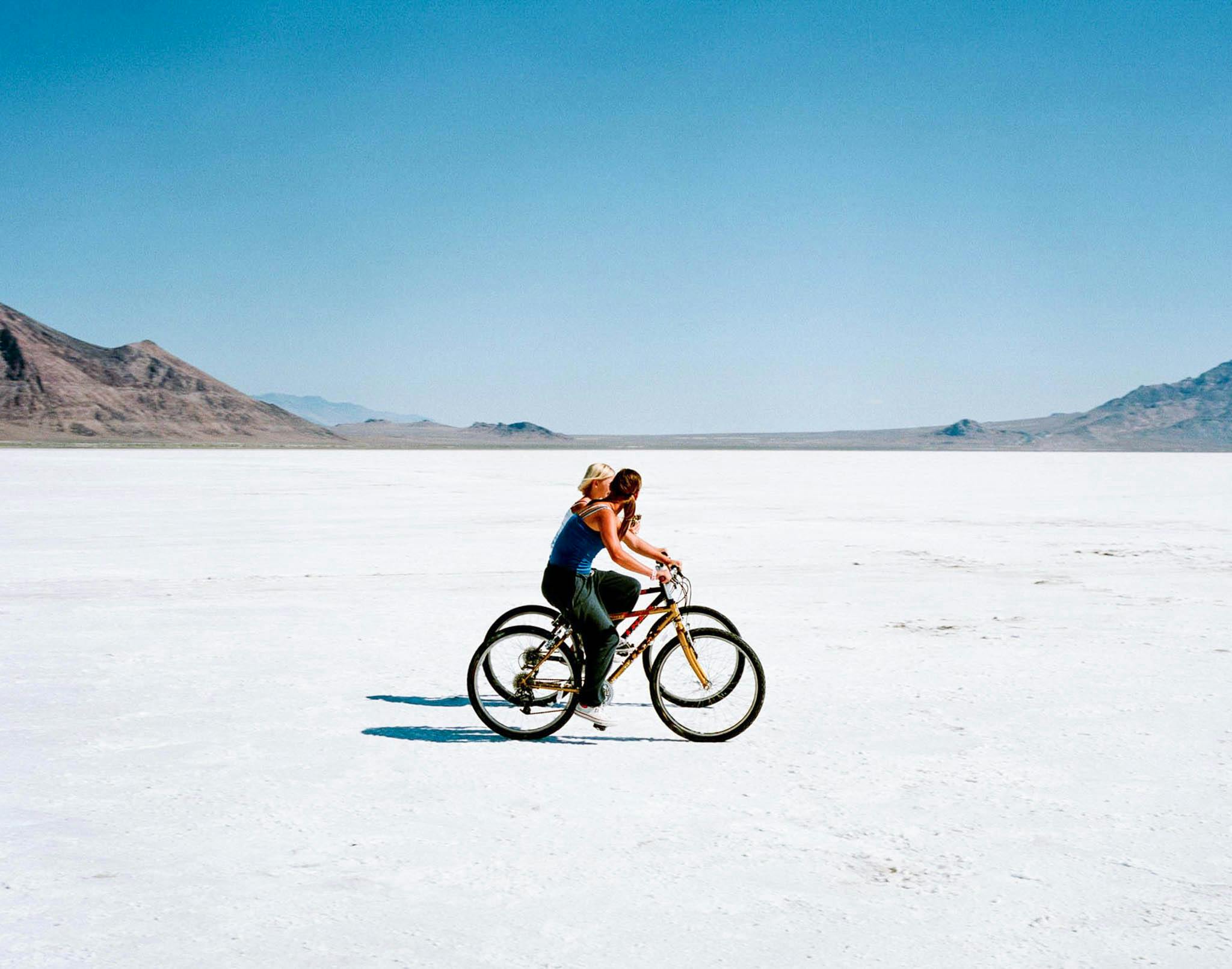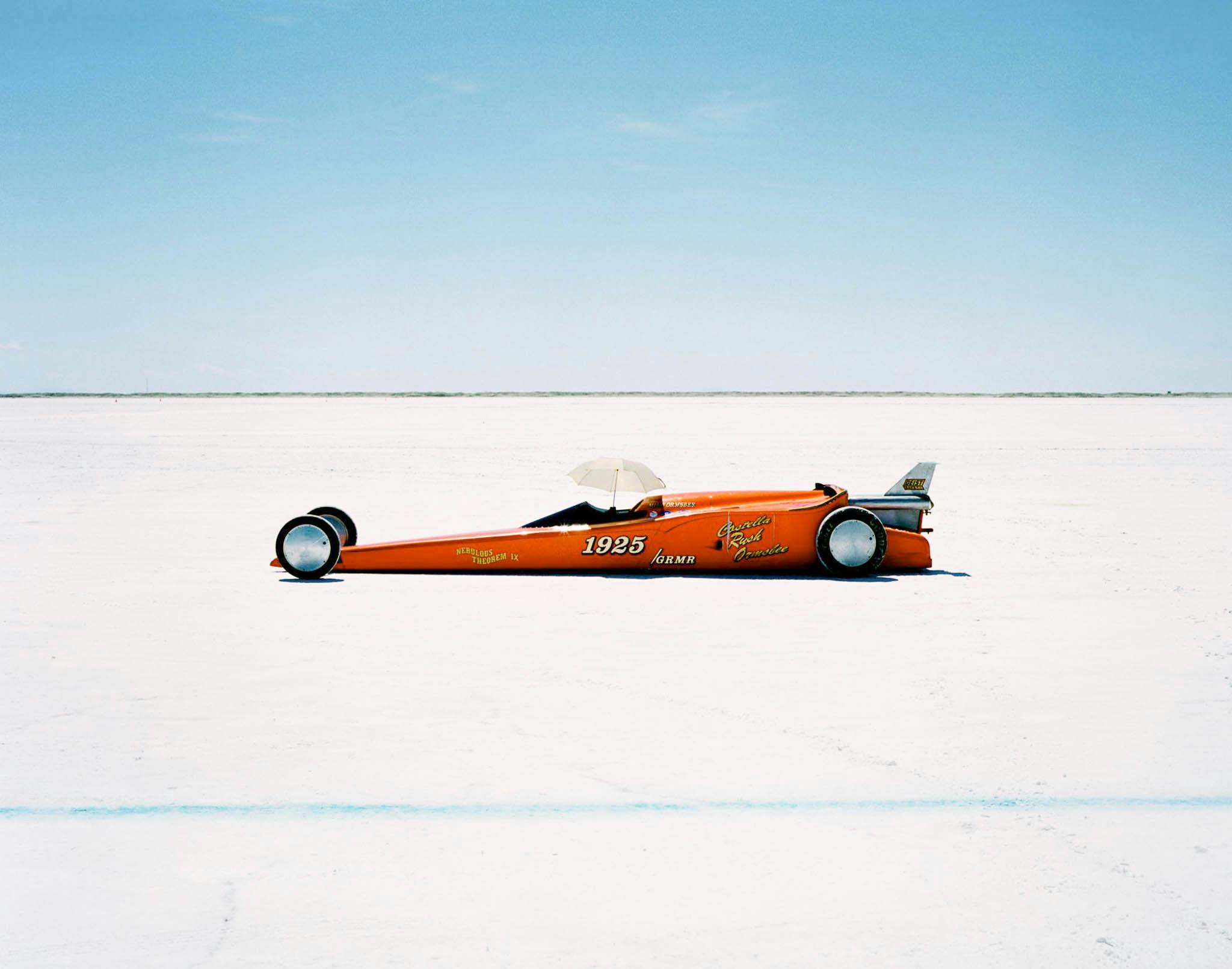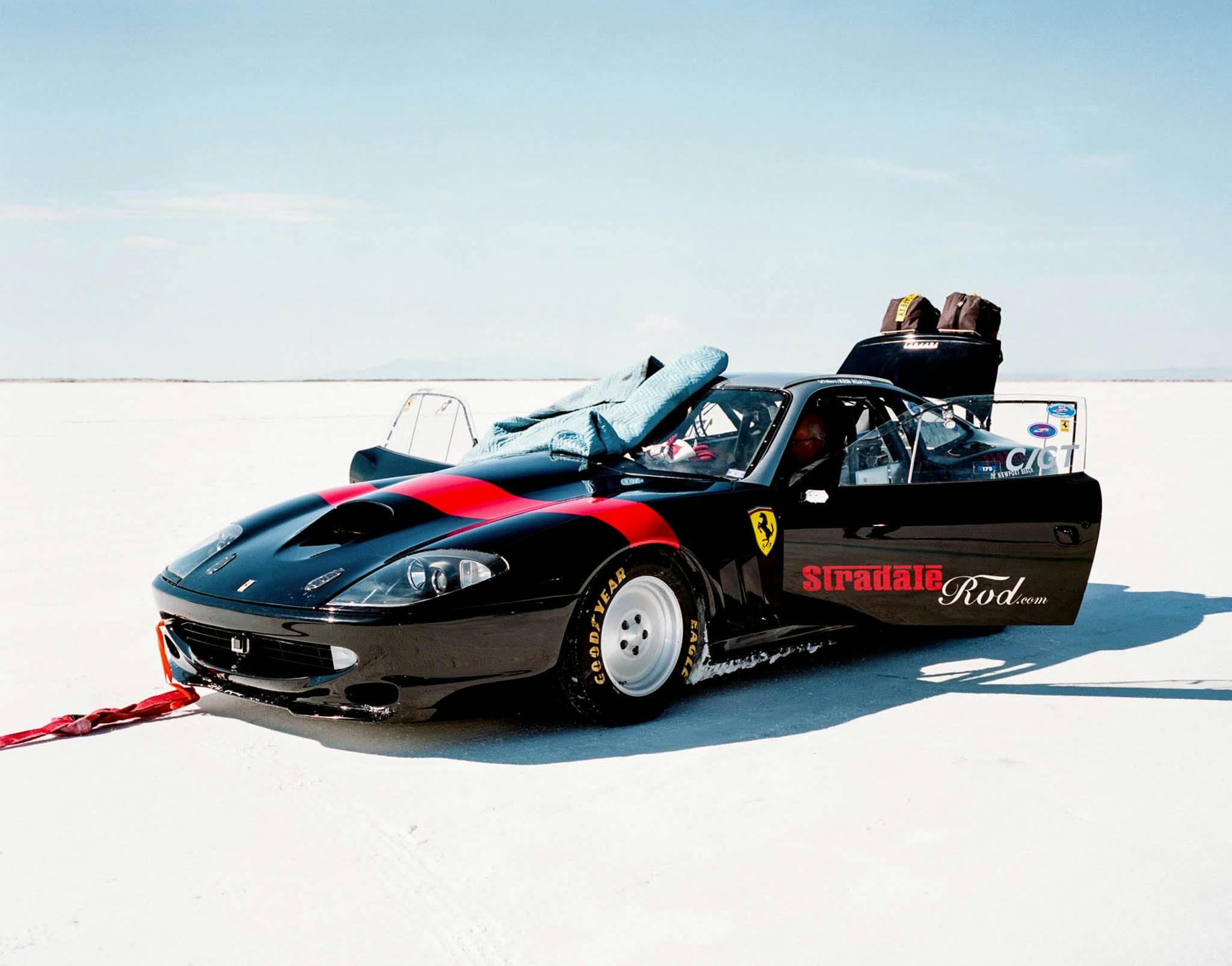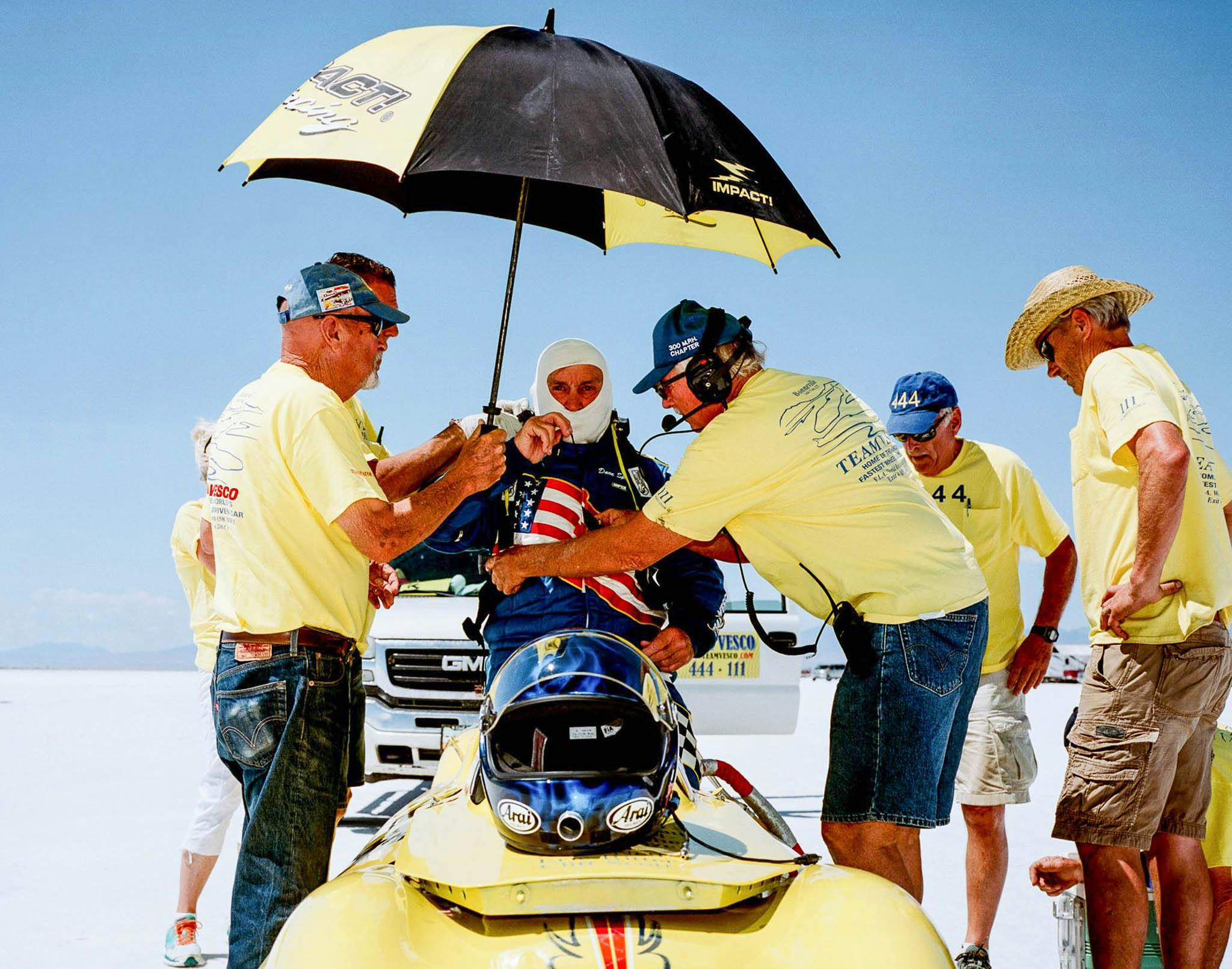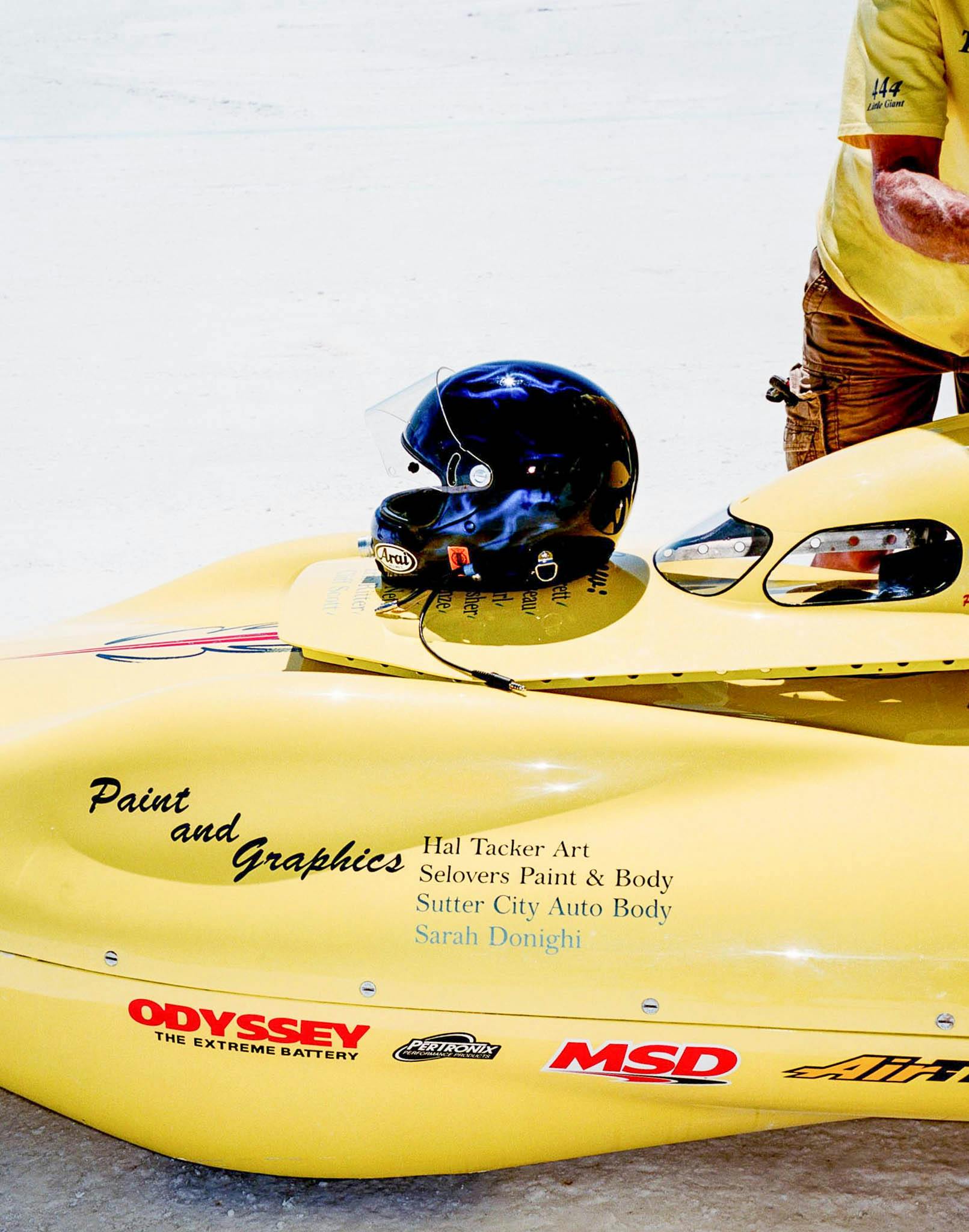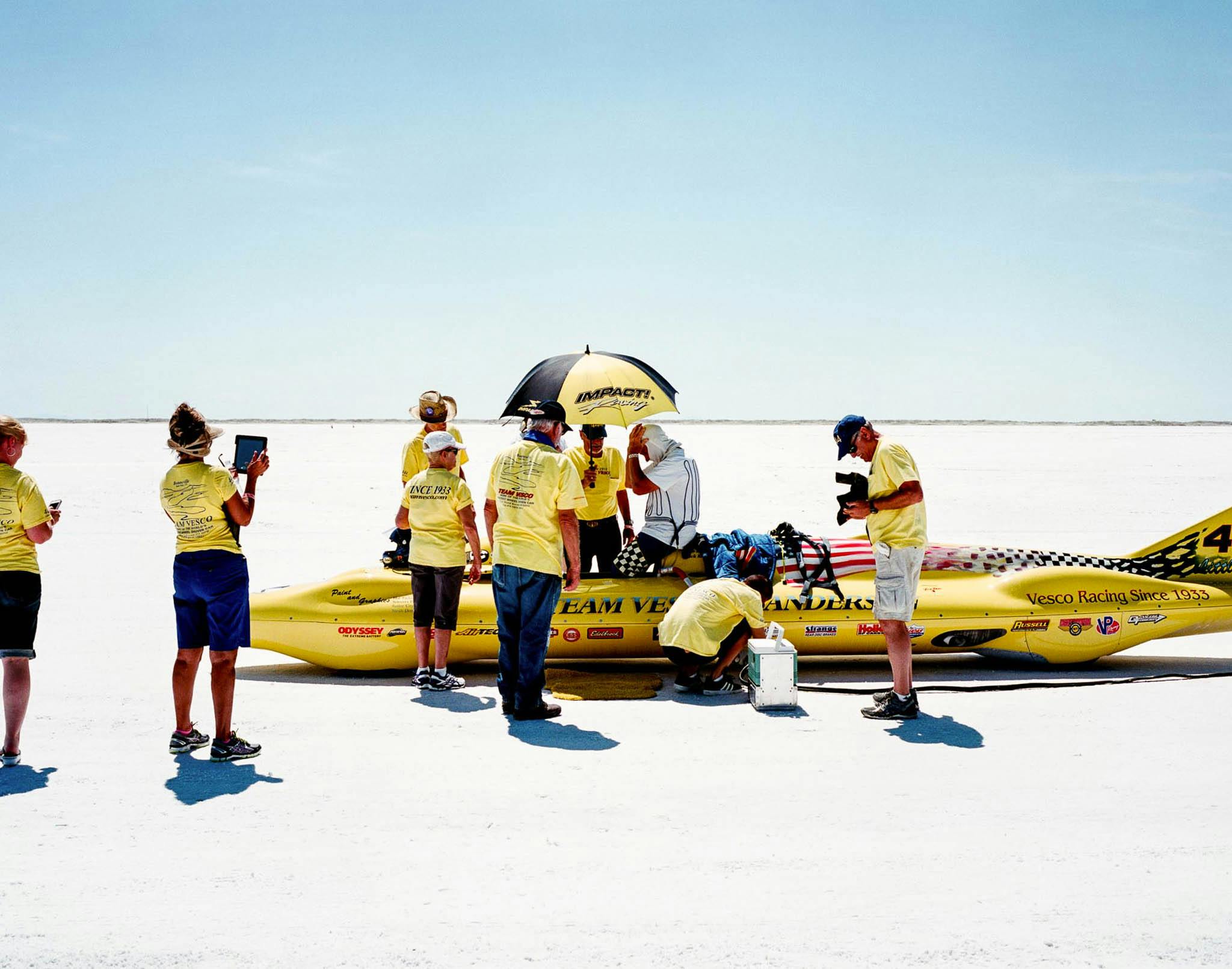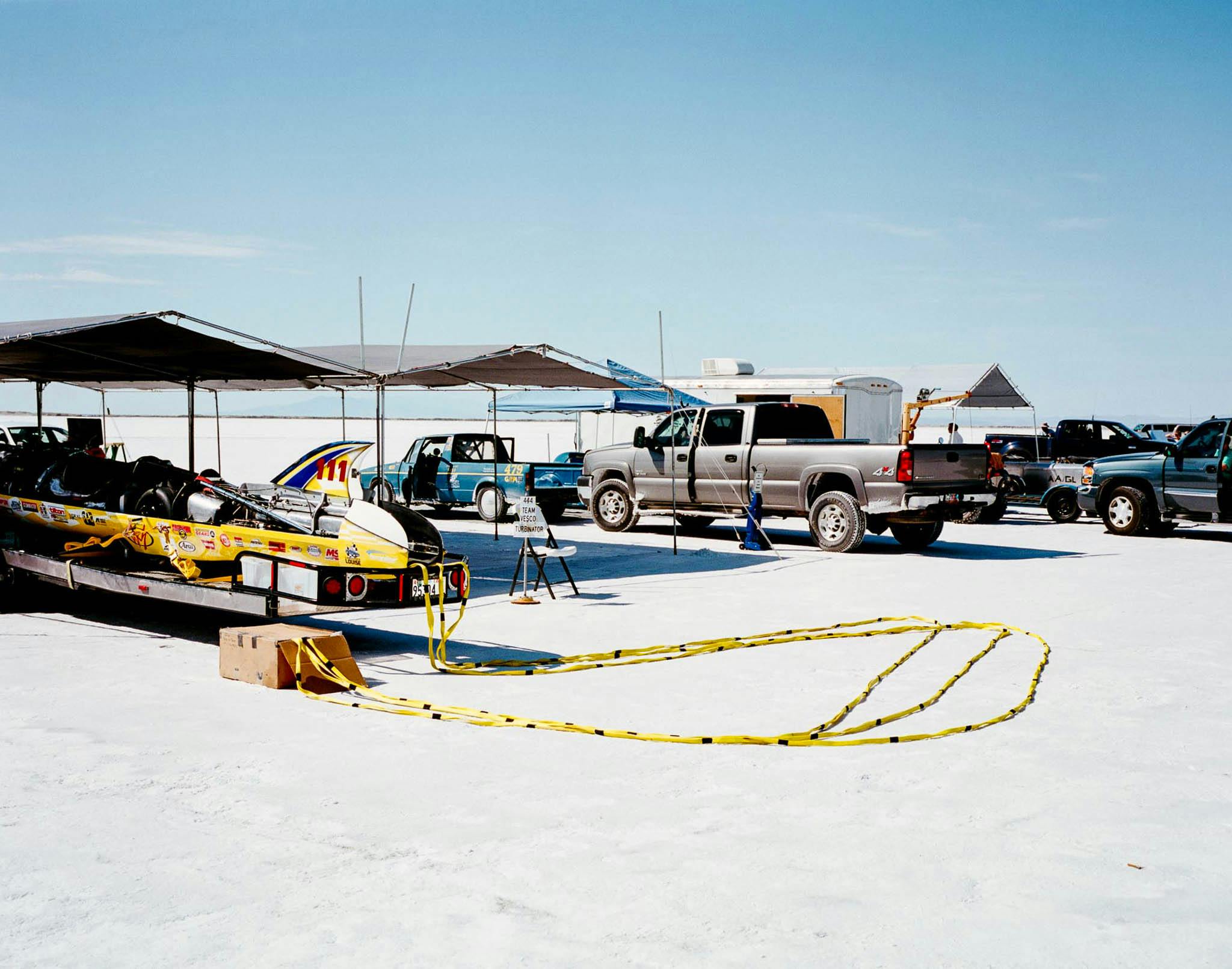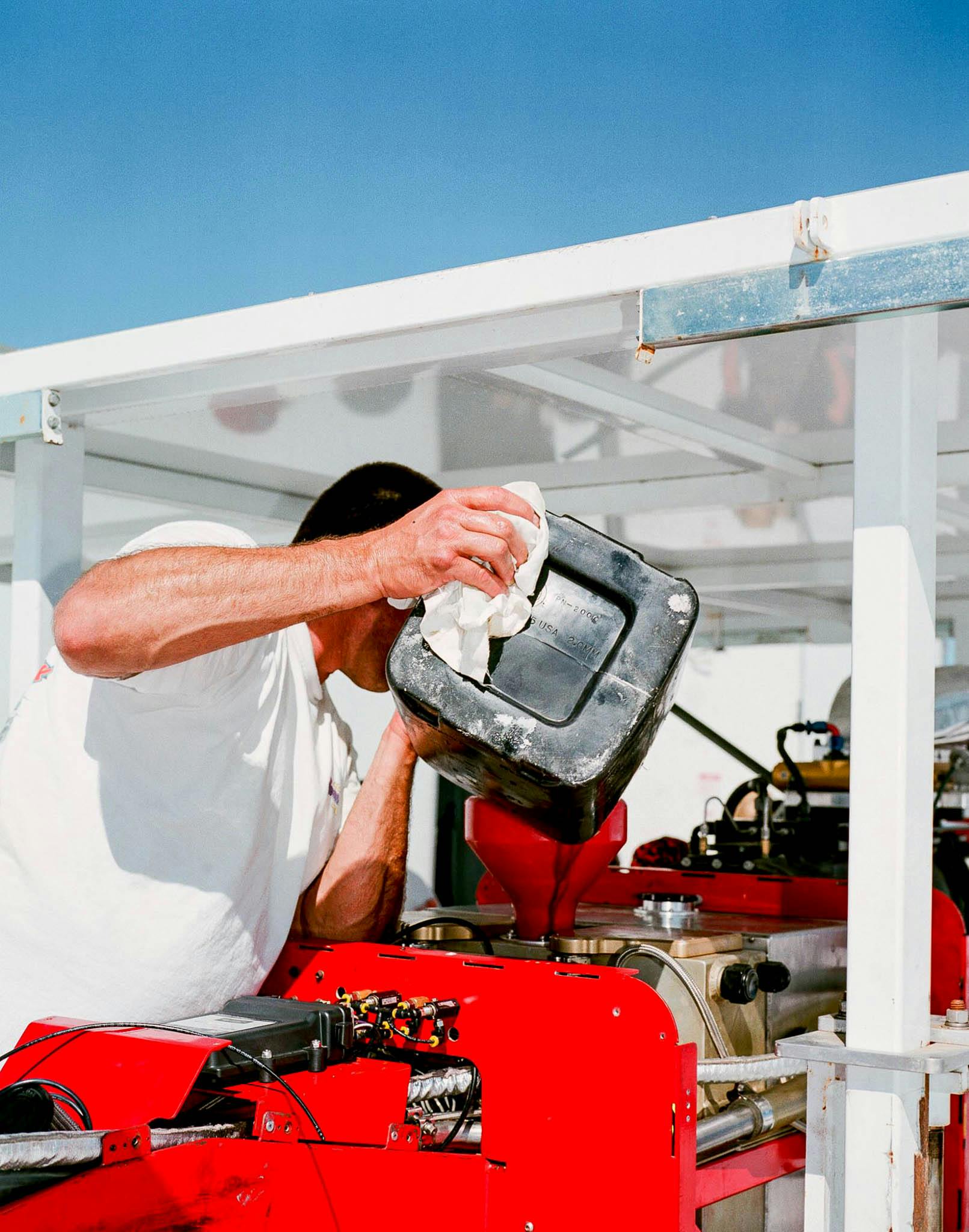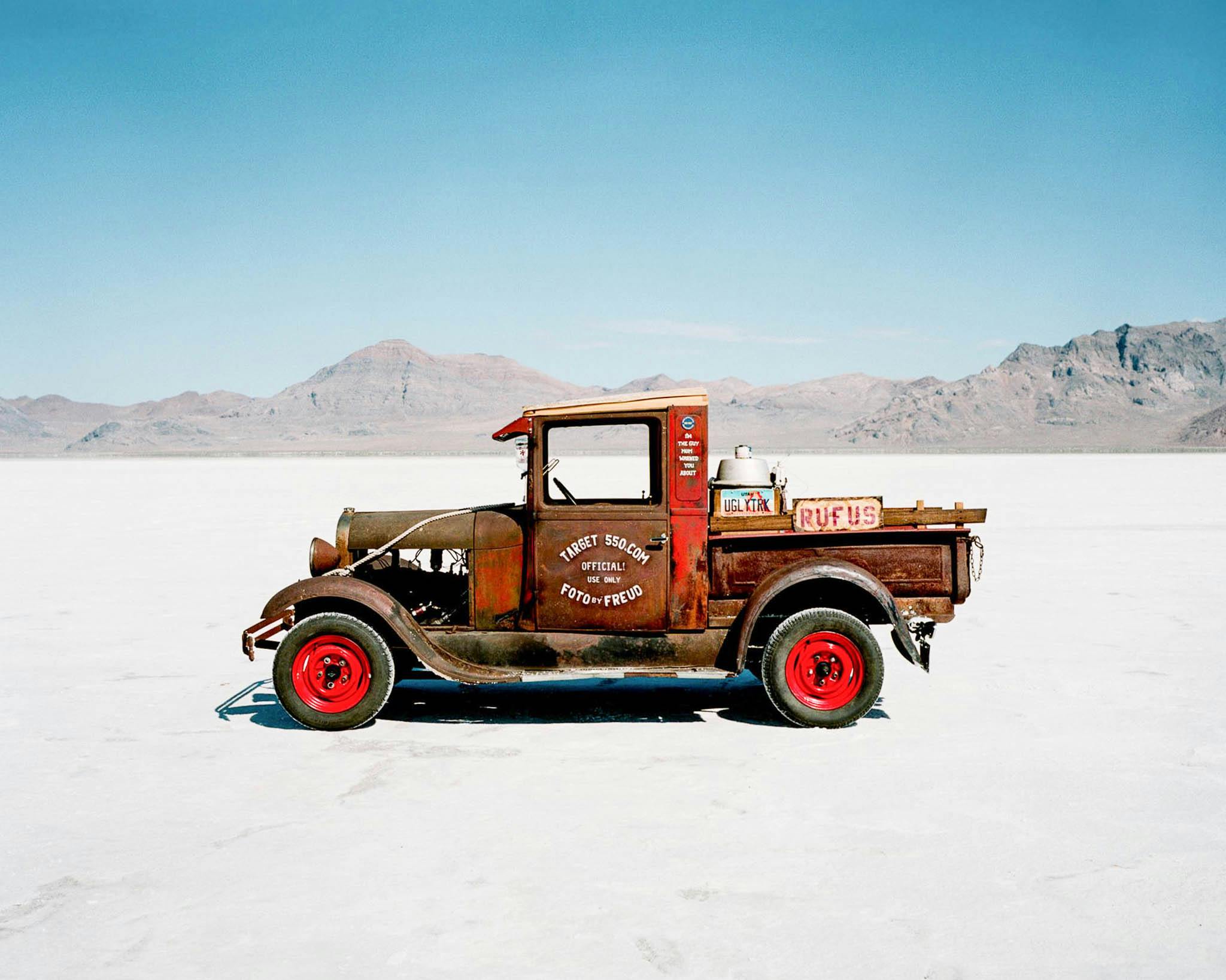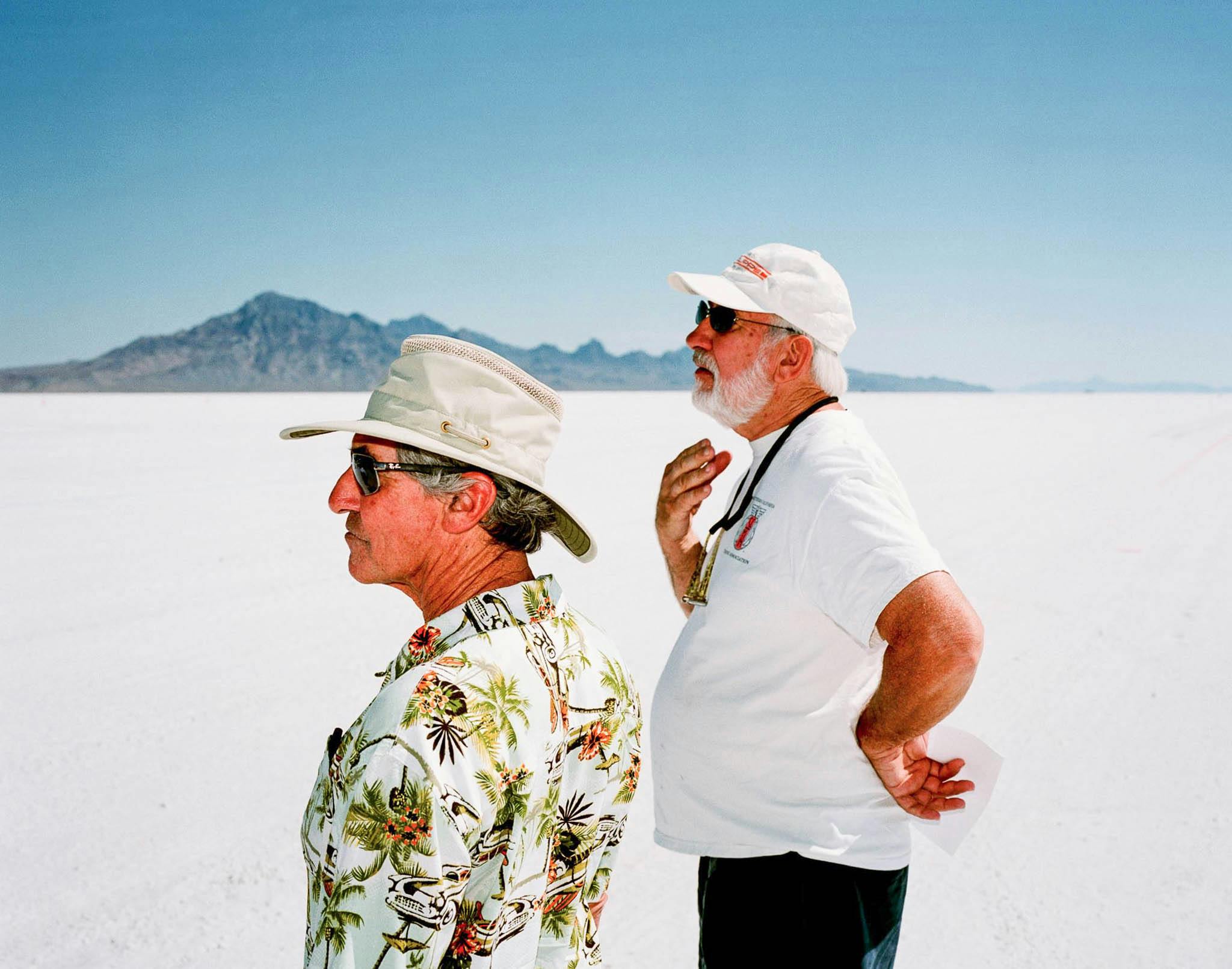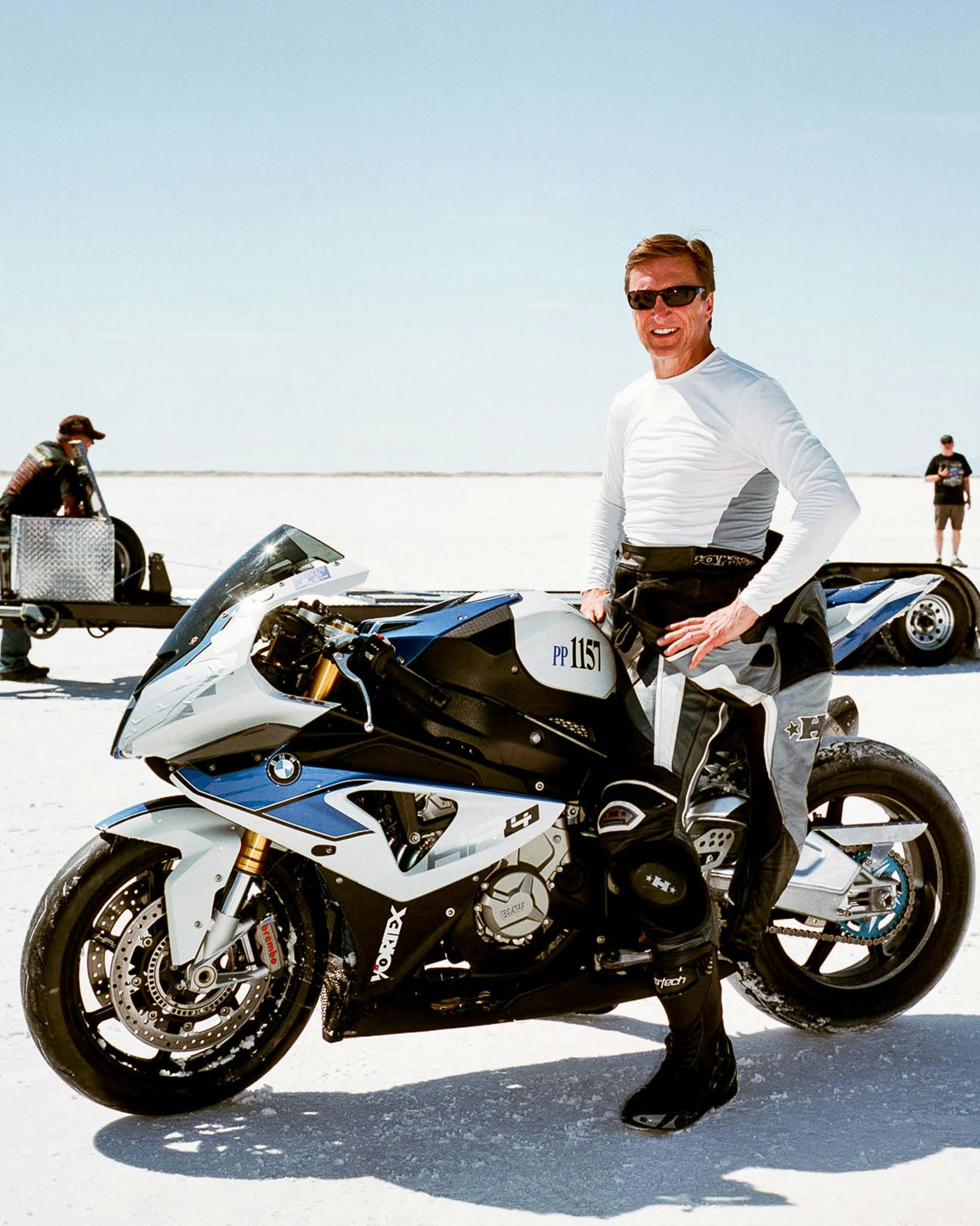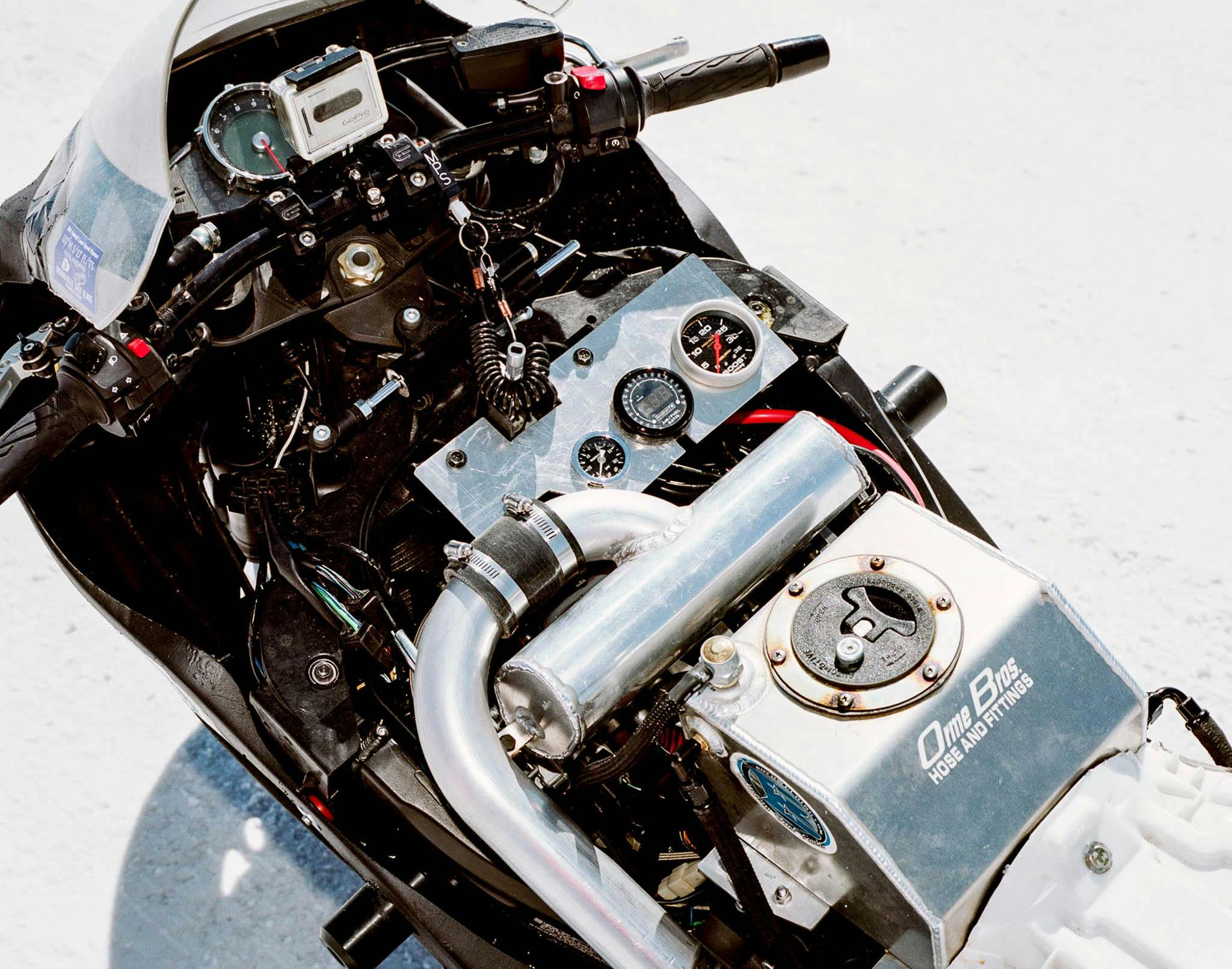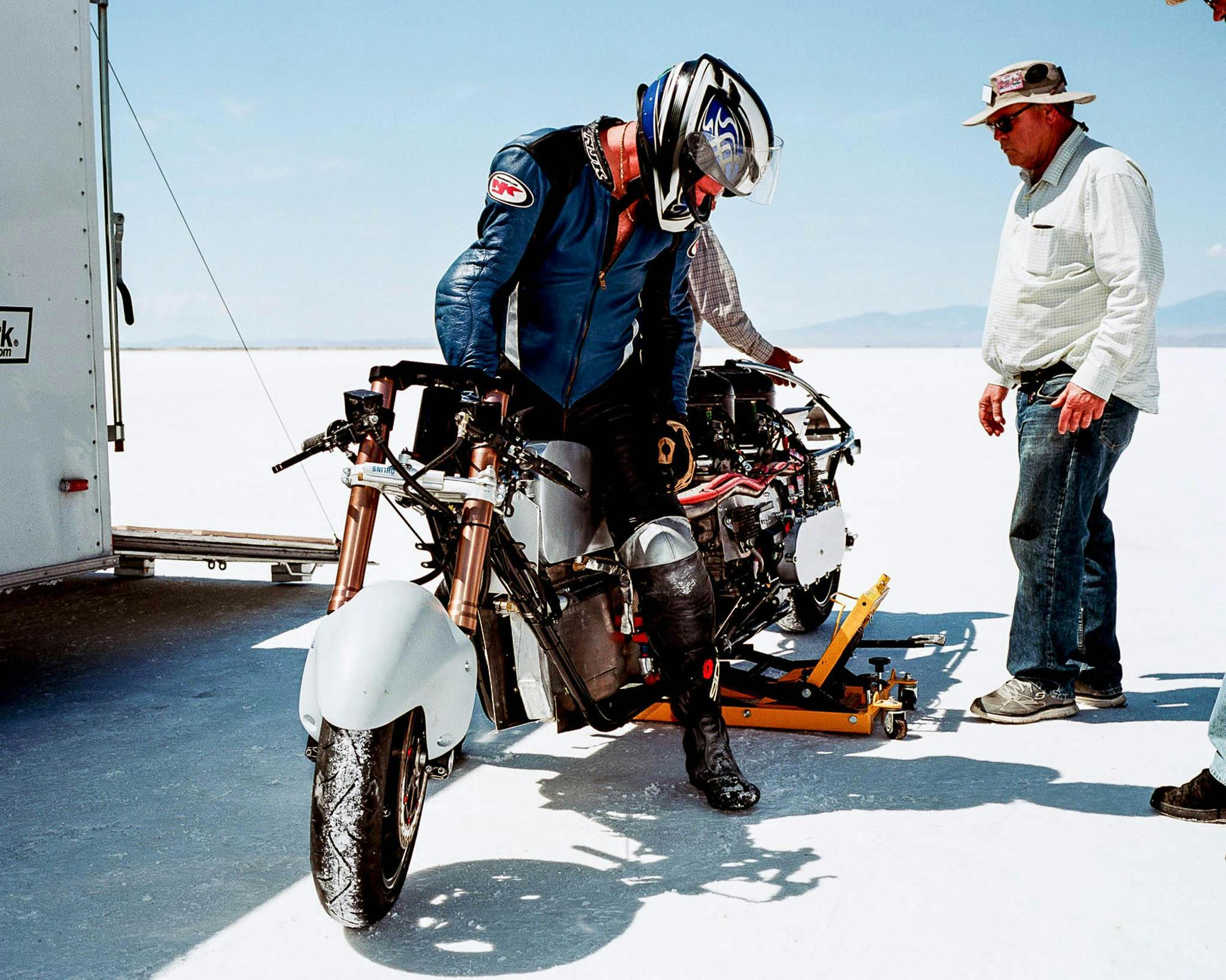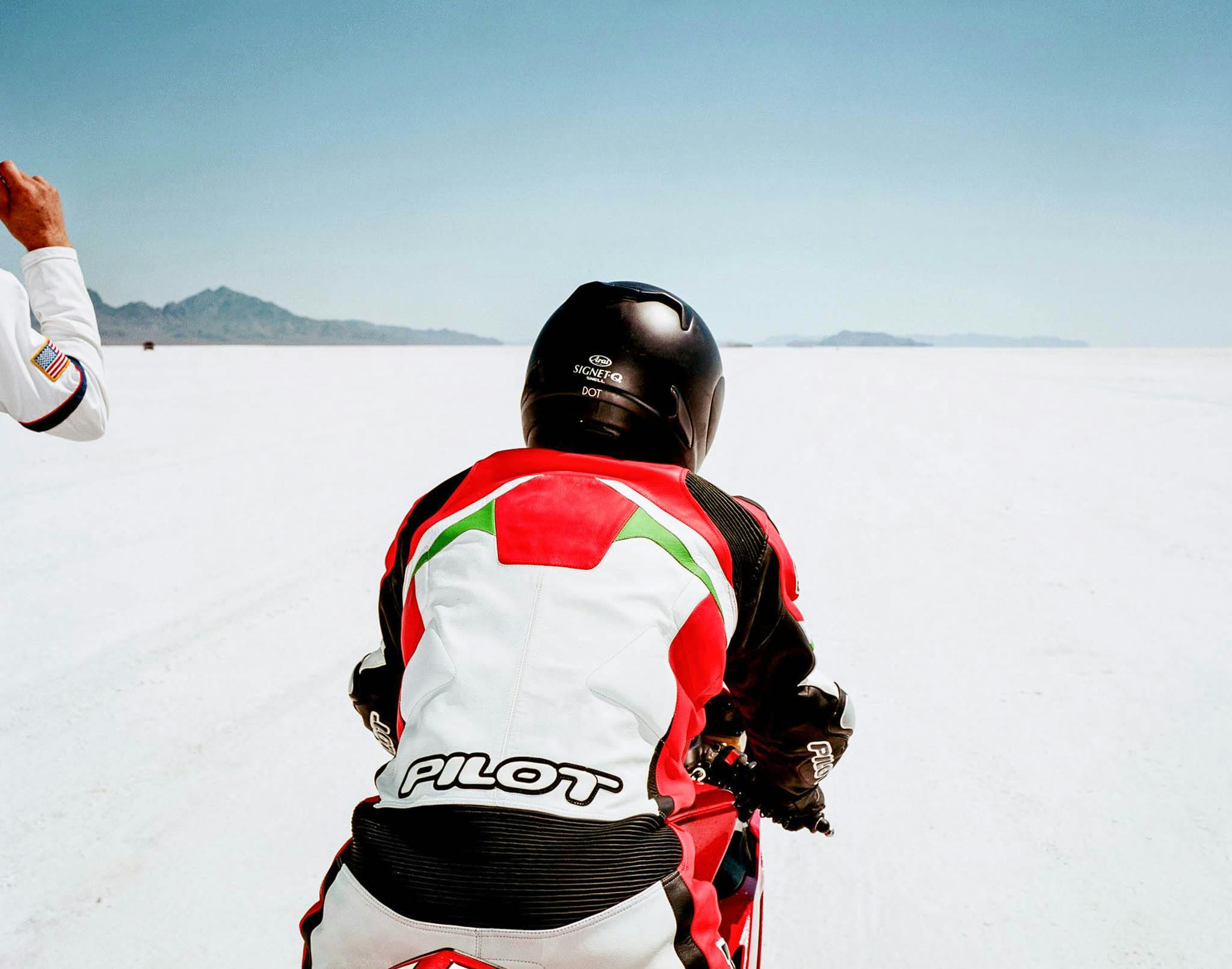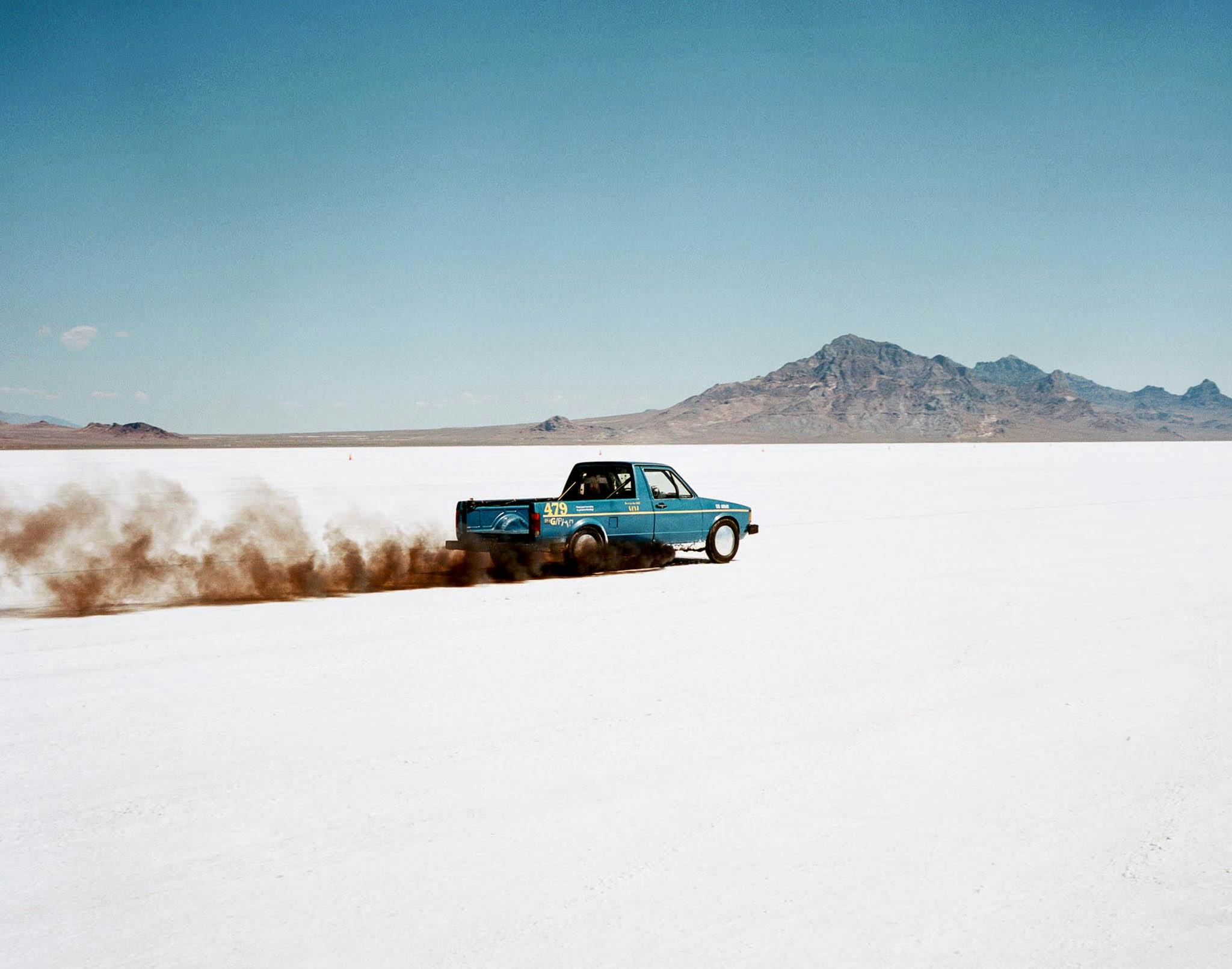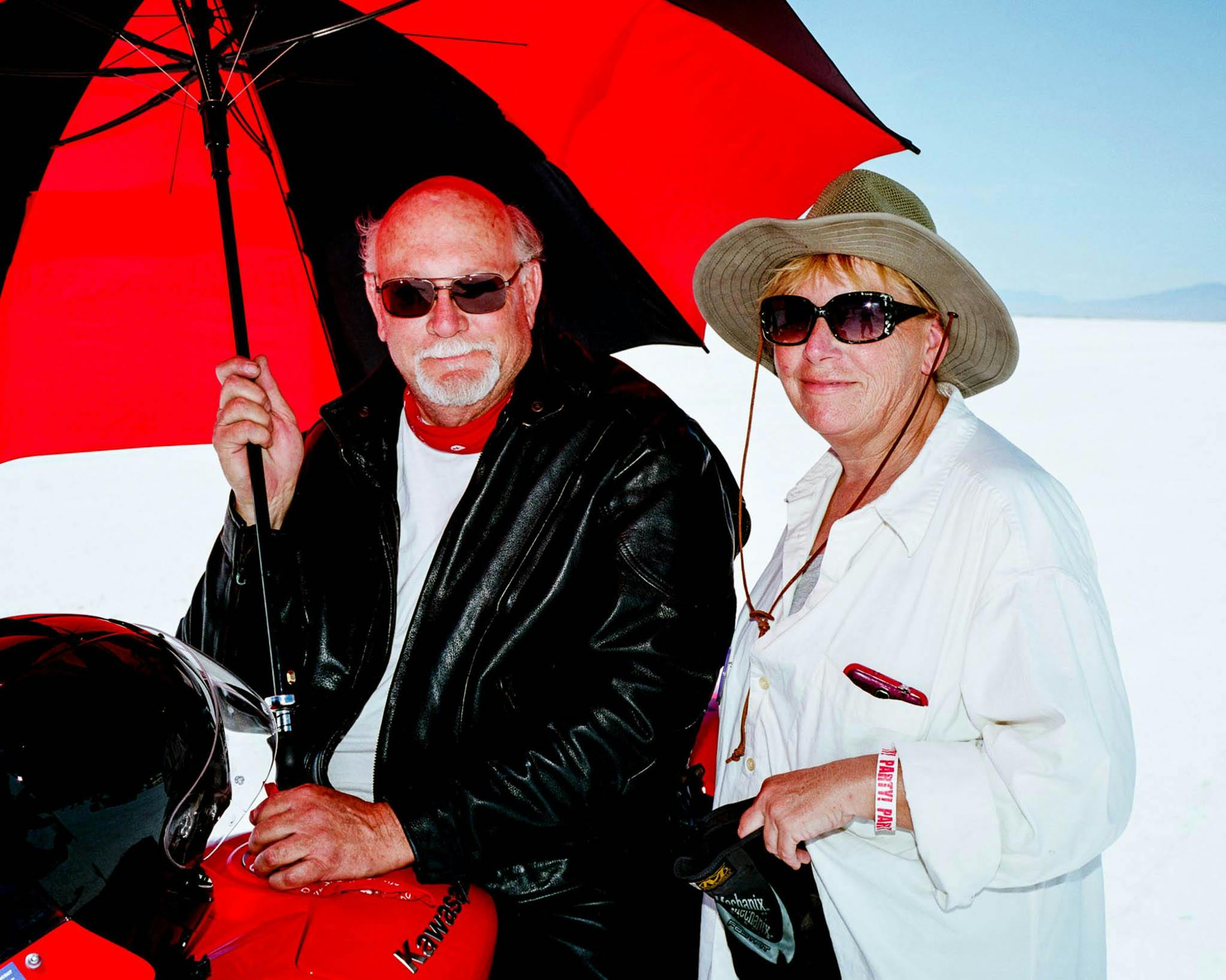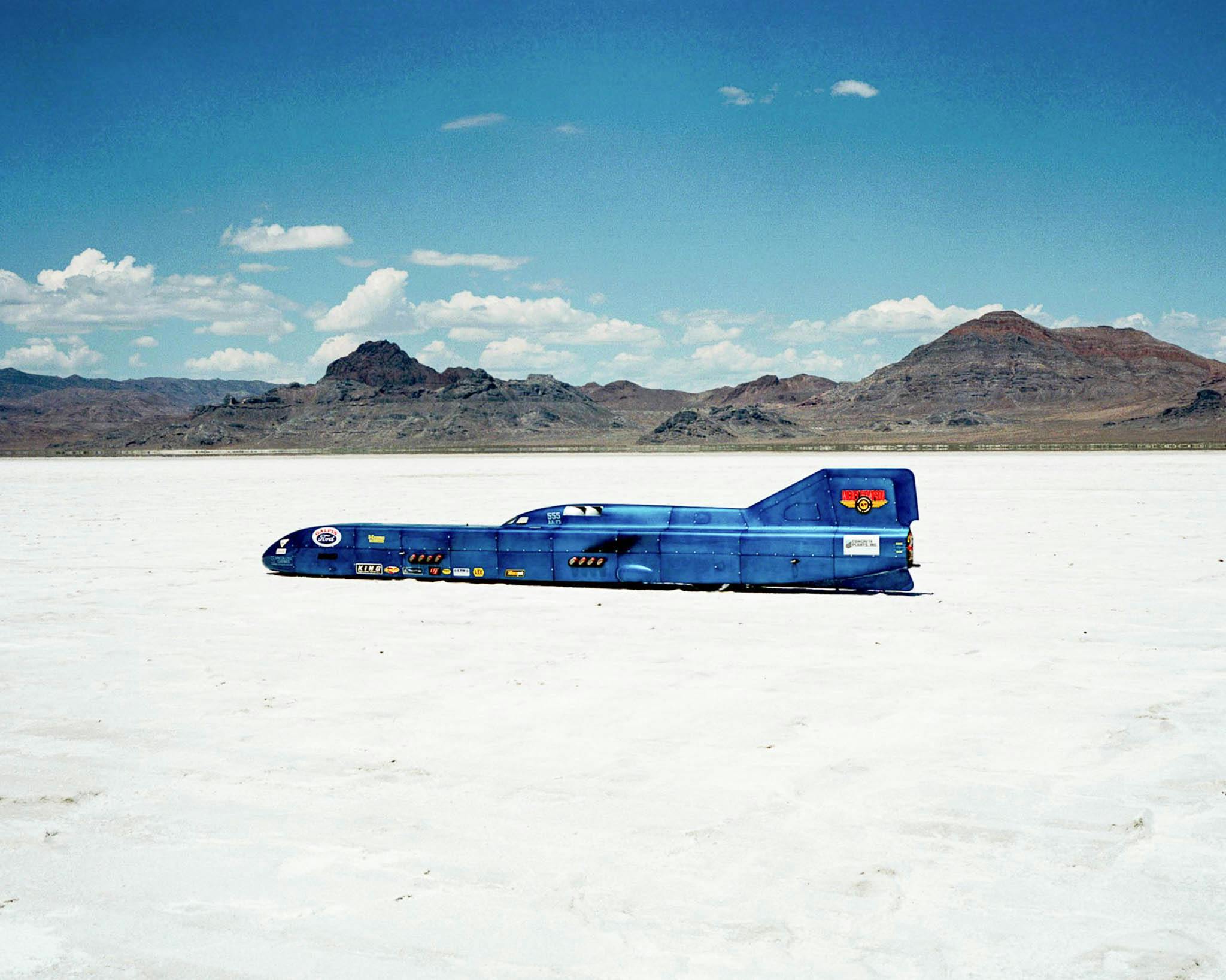The air is laden with the fragrance of fuel; gas, diesel, alcohol, and jet menace the nose. Trucks, trailers, vans, pop-up tents, and umbrellas that have been used to transport and house the jet cars, drag trucks, speed bikes, rocket sleds, and pretty much any other form of straight-line land based velocity machine you can imagine are scattered across the salt like building blocks on white paper. This is the world renowned Bonneville Salt Flats, a dried lake in nowhere Utah where the speed obsessed make pilgrimage every summer.
Lets step back and assess and suspend the cultural static, what are we seeing, what exactly is happening here? In front of us is a fleet of vehicles shaped like teardrops, like rockets, like bullets at rest waiting to be shed, ignited, and launched into this arena of speed. Here human beings conduct their vehicles in singular fashion, driving across a vast unblemished white canvas in long undeviated lines, a solitary scratch on freshly shaken Etch-A-Sketch. To what end? This is a challenge to the most fundamental element of them all; this event is an investigation, a dissection, of time.
Modernity is obsessed with time and our ability to manipulate it, speed. Culture has tied it to technology, to our righteous sense of convenience. It is instant gratification, High-Speed Internet, on demand hot water, and Hotpockets. We have grown to expect that speed, like entropy, will always increase. Still as a real visceral experience, speed is something most experience in the abstract; because speed is dependent on contrast, the higher the contrast, the higher the sensation of speed. Some of us may have grown up without cellphones, without jet planes, without fuel injection, and without Snap Chat but as fast as life seems to move, the true pace of our 24 hour, 365 day cycle is not quick enough to create a lasting and concrete impression of before and after, at least not for me. So life as we experience it is being pulled between polarities, the demand for speed on one side and on the other, the inability to truly recognize it. One way to break this recognize time is through sport; skiing, rollerblading, skydiving, bike riding, etc. All are capable of delivering to us an awareness of speed. But in terms of readily available mechanisms for actualizing this awareness the automobile takes the cake.
As a young driver I was given the keys to an early ’80s Subaru station wagon. A capable craft to be sure, and I would pilot this little ripper along the desolate dirt roads that twist through the sagebrush covered crater of dirt that is the Owens Valley. I had caught glimpses of World Rally racing on late night sports and would spend hours each day; during my lunch break, after school, and late into the night attempting to perfect the Scandinavian Flick, the perfect drift, all to capture a sensation of speed.
There was a little wash on one of the roads where, if you hit it going around 50 miles per hour, it would send the car into the air just right, a nice long ski jump hit. I had friends lining up for a chance to take part in this small abstraction of flight. And each launch into the air felt as if time froze for a moment, everything went silent, as if through speed we had momentarily broken time’s iron grasp. These were the teenage years, and we were experiencing what might have been for the first time in our lives a heightened awareness of time’s tireless march; we carried a sense of nostalgia for the unawareness of childhood and an uneasy sense of the increasingly regimented existence of what was yet to come. But in those brief flying moments we were released. I am not alone in my experience, around the world the automobile has become the de facto tool in our chase for speed.
But it is at Bonneville, during the speed trials of the later summer and early fall when motorheads and engineers from all over the world ranging from the taciturn to the frantic take over the dry salt beds, that the world bears witness to the most fantastic attempts at cracking the code of speed.
This adventure is not without its consequences. Humans are more-or-less water balloon animals built around a bamboo frame, easily tearable, maim-able, breakable. But this is the risk that those who attempt to harness speed in order to tame time are willing to take. Freud would link this to the death drive, our subconscious steering us back toward an inert and lifeless state, back to the place we were before birth. That maybe so, I mean in nothing there is no time, no speed, NO-THING so I guess that’s one way to solve the problem. But, what if this isn’t a death drive at all, rather an attempt to affirm life, what if we’re actually looking to live in a moment? Get familiar with a single point in time, suspend the march, enjoy life before it passes us by? Here on the Salt Flats of Bonneville where the world’s fastest vehicles streak across the desert maybe what we are seeing is not at all focused on speed, but a rather fantastic effort to make time stand still.
